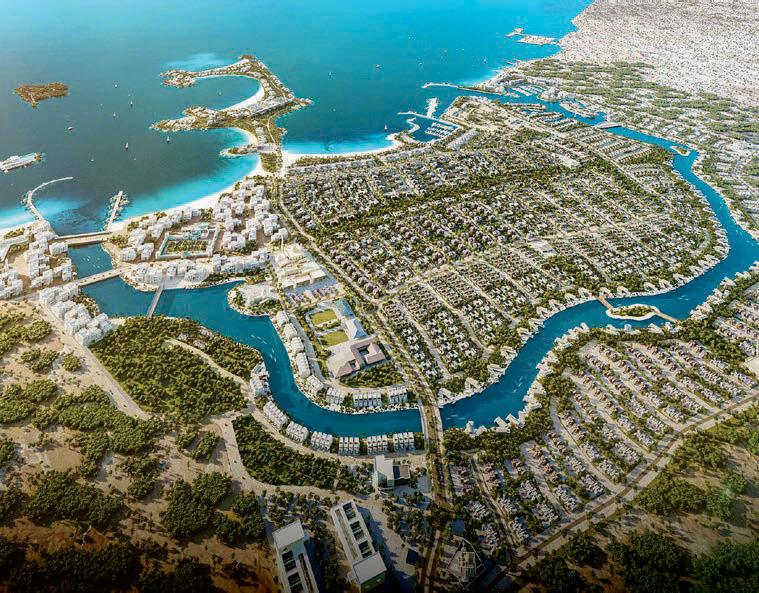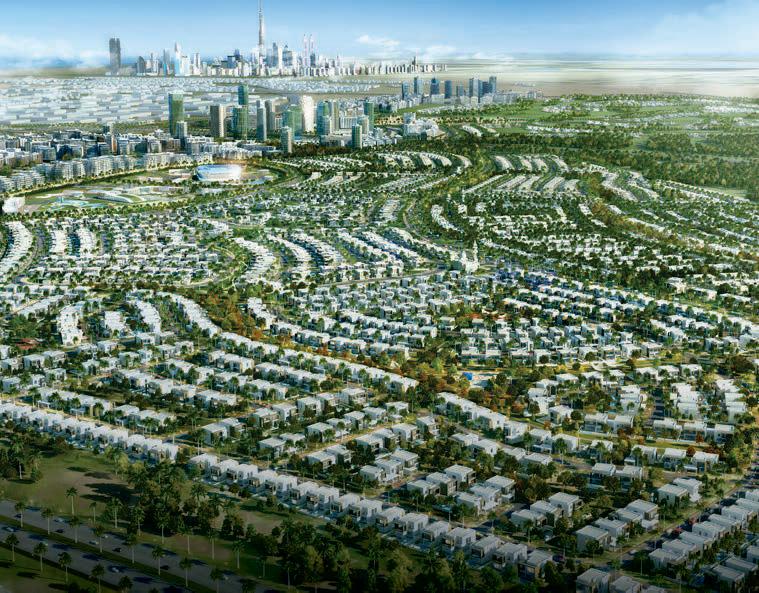Superpower

 Licensed
Licensed
Scott Coombes and the exceptional growth of



 Licensed
Licensed
Scott Coombes and the exceptional growth of


Scott Coombes is the Co-Founder and Managing Partner of AESG, speaks to Middle East Consultant about the key trends impacting the sector and the factors driving AESG’s 80% year-on-year growth…
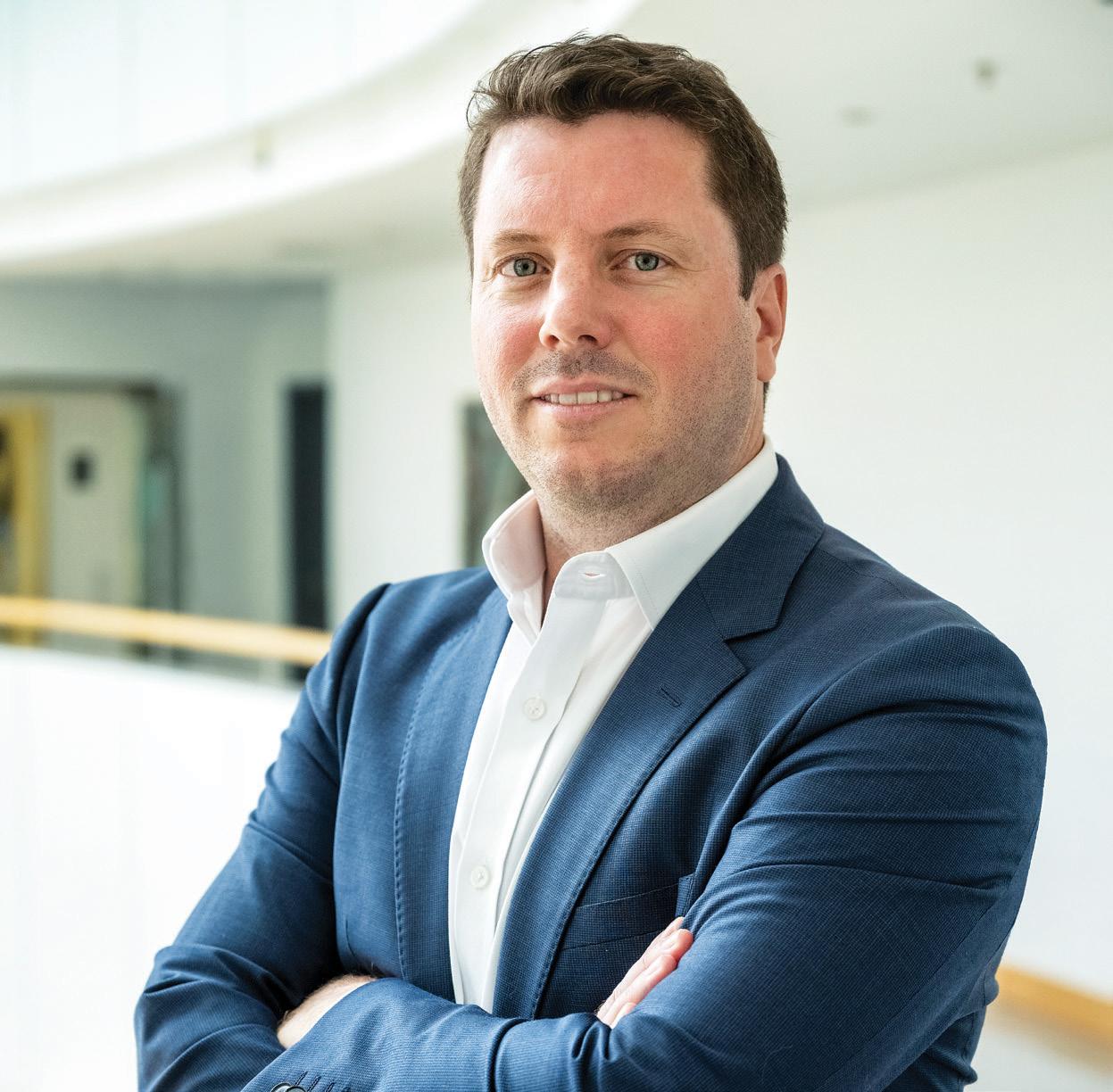
Topic

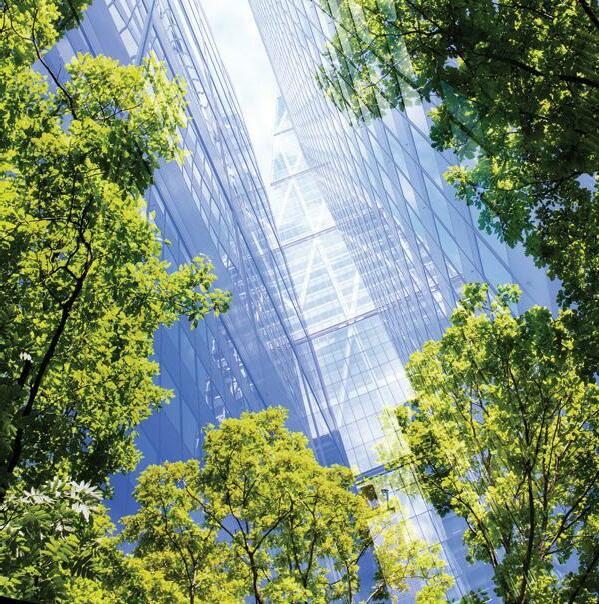
Practice
World-leading risk management author Joseph Brewer - author of ‘When Mega goes GIGA’ - identifies a core raft of key risks, contingent with the new round of super-large Saudi projects…
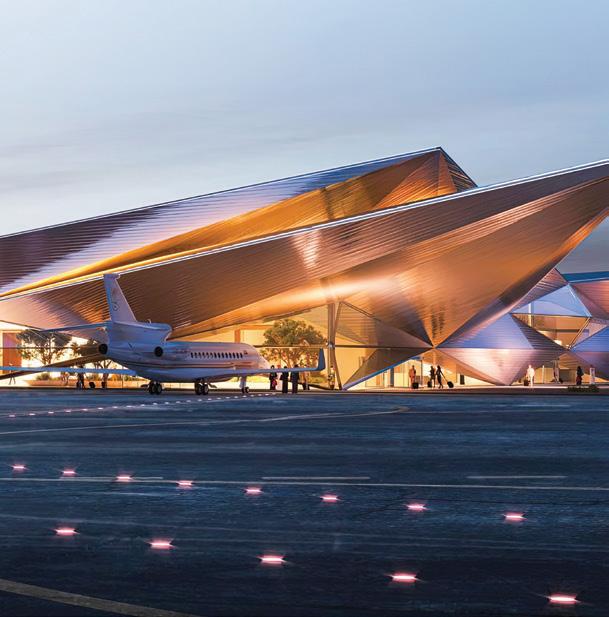
Digital twins will make the new generation of smart cities smarter and build them out on a previously unimaginable scale, explains tech pioneer Drew Gilbert

Omnium’s Sultan Alsohaibi discusses the key procedural and contractual issues raised by the new generation of Saudi’s giga-projects and the mechanisms best able to resolve them
On Site
Cundall’s World Green Building Week, which took place in Dubai in September, showed how retro-fitting the built environment can be a powerful catalyst in the quest for decarbonisation


The Wellness in Construction Summit took a close-up look at how corporate cultures that encourage personal well-being can reap superior commercial rewards

At the end of 2019 (I was going to say ‘just before the Pandemic’ - but let’s consign that word to history!), I was privileged to chair a panel at the Capital Club, DIFC, titled ‘The future of HR in the GCC’. Amongst a highly distinguished line-up of panelists was the Global CEO of Aon Hewitt - the largest recruitment company in the world. He said that here in the GCC, his company was frequently asked to create a corporate salary template based not on job specifications, working hours and KPIs, but on ethnicity. He explained that Aon Hewitt flatly refuse to do this, because it’s not only illegal but highly unethical. He then added that the GCC is one of the only regions of the world where this still happens.
Not good. In fact, all grist to the mill as to why this year, the Women in Construction Summit has been re-branded as Women in Construction: Diversity & Inclusion. The reality is that there are simply too many challenges around ethnicity that are remaining without any dialogue whatsoever - and the
facts show that it’s only by discussing and signposting topics here that change gets to happen. For example, note that it’s now quite commonplace for the Top 20 consultants in the region to create gender-bias recruitment programmes around the STET disciplines, at graduate level - something almost unthinkable a decade ago. (Of course, did I hear you ask how this has translated into the C-Suite? Not very well - in the private sector, the GCC has the lowest numbers of women at Board level of any region in the world, at slightly more than 4.5%).
This is also why we have created The Diversity Report, which will be available online shortly. We spoke to a number of the ‘magic circle’ firms about what they are doing when it comes to gender and diversity agendas, and they gave us answers that were often surprising, provocative and - sometimesbrilliant. One of the challenges here is to try to translate what big, enlightened businesses are doing into the totally different cultures (and budgets) of much smaller, regional entities. How can that best be done?
I strongly urge you all to review the key comments emerging in The Diversity Report.
MANAGING DIRECTOR RAZ ISLAM raz.islam@cpitrademedia.com +971 4 375 5471
MANAGING PARTNER VIJAYA CHERIAN vijaya.cherian@cpitrademedia.com +971 4 375 5713
DIRECTOR OF FINANCE & BUSINESS OPERATIONS
SHIYAS KAREEM shiyas.kareem@cpitrademedia.com +971 4 375 5474
PUBLISHING DIRECTOR ANDY PITOIS andy.pitois@cpitrademedia.com +971 4 375 5473
EDITOR PAUL GODFREY paul.godfrey@cpitrademedia.com +971 4 375 5470
COMMERCIAL DIRECTOR JUDE SLANN jude.slann@cpitrademedia.com +971 4 375 5714

ART DIRECTOR SIMON COBON GRAPHIC DESIGNER PERCIVAL MANALAYSAY PHOTOGRAPHER MAKSYM PORIECHKIN
DATA & PRODUCTION MANAGER PHINSON MATHEW GEORGE phinson.george@cpitrademedia.com +971 4 375 5476
EVENTS EXECUTIVE MINARA SALAKHI minara.s@cpitrademedia.com +971 4 433 2856
ABDUL BAEIS
UMAIR KHAN
FOUNDER DOMINIC DE SOUSA (1959-2015)

Published by
The publisher of this magazine has made every effort to ensure the content is accurate on the date of publication. The opinions and views expressed in the articles do not necessarily reflect the publisher and editor. The published material, adverts, editorials and all other content are published in good faith. No part of this publication or any part of the contents thereof may be reproduced, stored or transmitted in any form without the permission of the publisher in writing. Publication licensed by Dubai Development Authority to CPI Trade Publishing FZ LLC. Printed by Al Salam Printing Press LLC. CPI Trade Media. PO Box 13700, Dubai, UAE. +971 4 375 5470 cpitrademedia.com
Editor, Middle East Consultant© Copyright 2022. All rights reserved.
C M Y CM MY CY CMY K


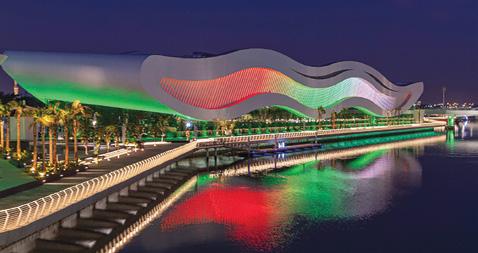


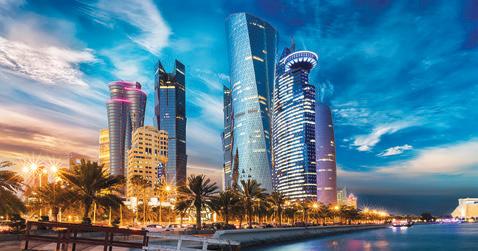


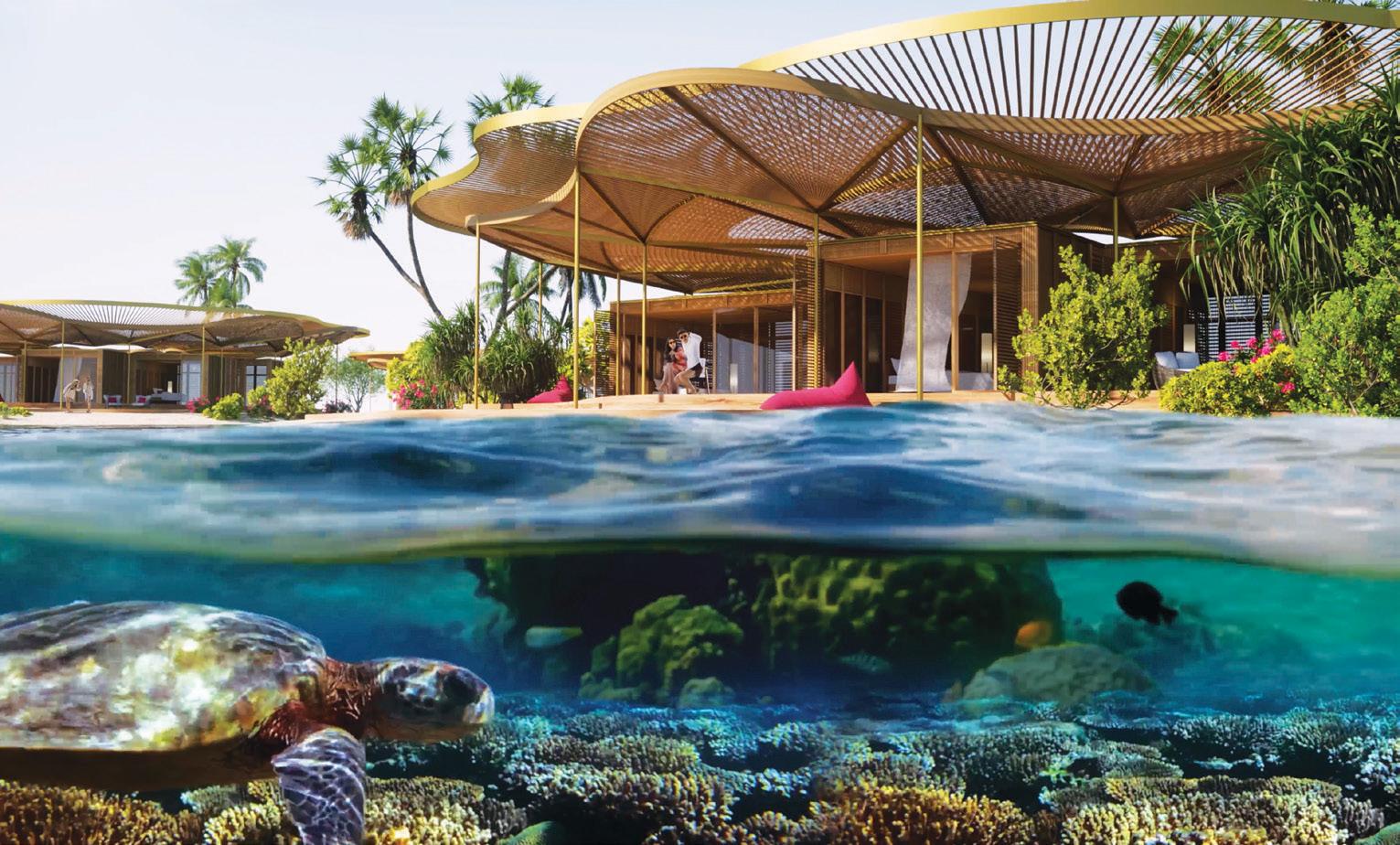
HH Sheikh Hamdan launches Dubai Robotics and Automation Program

The development of the sector will support the diversification of Dubai’s future economy
UAE hotel development pipeline to grow to 48,000 keys by 2030

Continental launches LD-Master L5 Traction construction tyre

The LD-Master ensures high traction and durability for loaders with demanding load requirements, company says
Zāzen Properties announces new sustainability and wellness project The announcement of the project follows the handover of the developer’s flagship development –Zāzen ONE – in JVT earlier this year
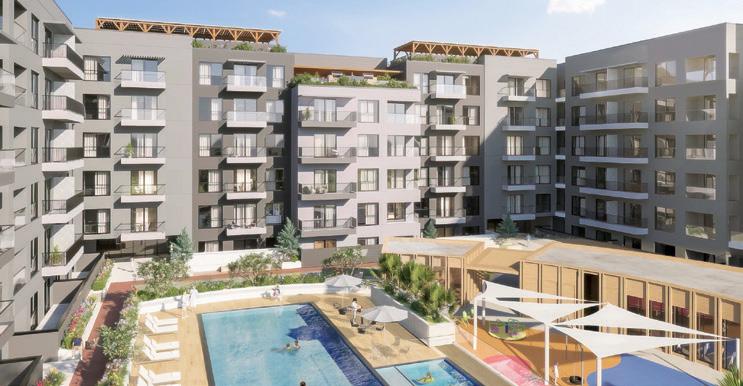
CONSULTANT
“Wellness initiatives deliver commercial benefits and there are studies to demonstrate ROI for the business” According to McKinsey & Company the global wellness market is worth about $1.5tn, with annual growth of 5% to 10%

Arada launches Masaar Discovery Centre
The new offering serves as a multiactivity community hub for the forested development project
CONSTRUCTION Union Coop announces completion of Nad Al Hammar Mall
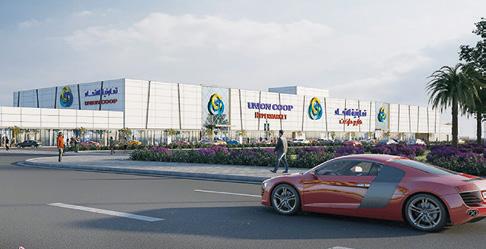
Middle East’s
consultant focused
Nominate now!

2022
TRSDC unveils design for Red Sea Marine Life Institute at AMAALA

PROPERTY Nakheel unveils new brand focus in line with Dubai 2040 Urban Master Plan
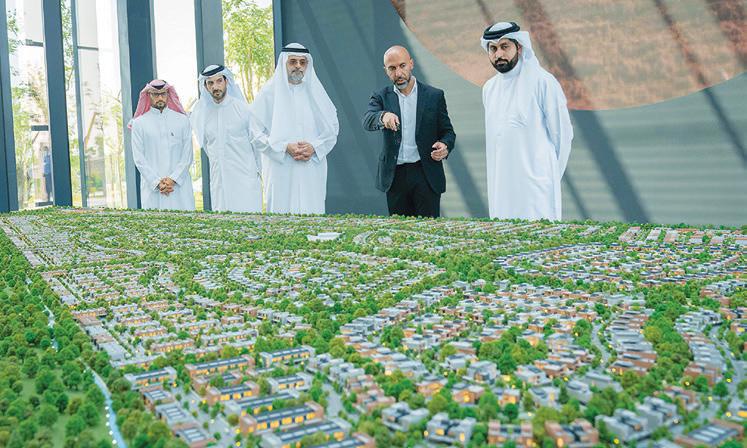

MACHINERY
to focus on future technologies at Bauma 2022

LL is now strengthening its end-to-end sustainability offering in the Middle East with the WiredScore certification. As a WiredScore Accredited Professional (AP), JLL will be able to assist its clients in attaining the prestigious WiredScore and SmartScore ratings for their buildings, further helping
realise their smart building and sustainability ambitions.
Setting the global standard for technology in the built environment, WiredScore and SmartScore are industryleading certifications focused on helping to create best-in-class buildings that attract and retain tenants, meet high sustainability standards, and are future-proof.
This offer has grown from the view that, with the region advancing at an accelerated pace towards achieving its net zero targets, the real estate industry needs to maintain and enhance its sustainability credentials, necessitating the convergence of the built and digital worlds. Smart building solutions are known to power a sustainable future rooted in their ability to monitor, manage, and optimise energy consumption using data and connectivity. Recognising this, JLL, in its new capacity as a trusted WiredScore expert in digital connectivity and smart technology, seeks to uncover real estate opportunities for organisations by aiding them in their efforts to meet high standards of sustainability for their developments while delivering exceptional user experiences, driving cost efficiency, and supporting futureproofing.
Today’s new generation of high tech sustainable buildings can require external benchmarking and accreditation of their ecofriendly status.
“With rising consumer consciousness and the pronounced need for climate action, the symbiotic relationship between smart building systems and sustainable businesses has never been clearer,” said Ben Jackson, Head of Project & Development Services for the Middle East & Africa. “As a company committed to leading the region’s digital and sustainability aspirations, this new credential with WiredScore will allow us to better support our clients to design futureready developments with sustainability and technology at its core, and also support them on the path to achieving certification for the existing buildings. Given our design, sustainability and digital expertise, this was a natural progression to utilize smart building tools.”
reviews how
will assist clients in achieving the prestigious WiredScore and SmartScore accreditations
This collaboration with WiredScore represents another significant step forward in JLL’s ongoing efforts to collaborate with global organizations such as Ceres, the World Green Building Council (WGBC), local Green Building Councils, and the World Economic Forum (WEF) to drive climate action for sustainable real estate, healthy spaces for all people, and inclusive places for thriving communities.
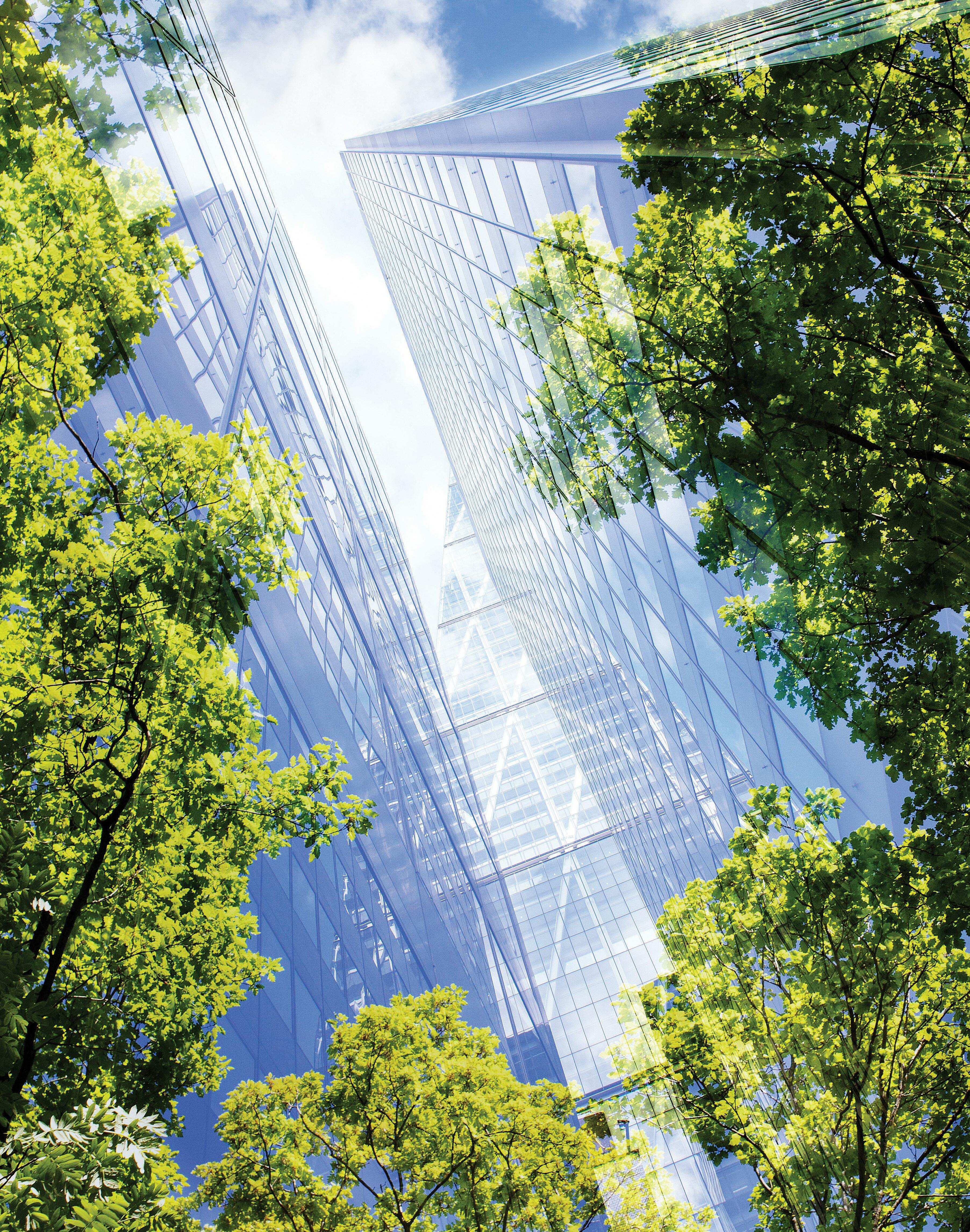
These awards celebrate the consultants - whether businesses or individuals - at the heart of the construction and development sectors. As well as honouring outstanding technical skills, they highlight the change-makers who deliver better, fairer, and more sustainable business.

The construction and development sectors are among the largest sources of income for every GCC nation and their innovation, scale and breadth of vision has helped focus world attention on the Middle East. These awards honour not only the subject specialists
– the architects, technicians, risk managers, designers, and technologists – but also the disruptors: the people pushing the envelope when it comes to critical factors like sustainability, gender balance and iconic leadership.
Ranging from the best multi-discipline consultant to the lighting firm of the year, the diversity of the categories aims to give a chance to all the companies that play a vital role in the industry.
Raise your brand profile, establish yourself as a thought leader and utilise this opportunity to encourage new business and empower your sales teams to generate effective new leads.
Andy Pitois | +971 4 375 5473 andy.pitois@cpitrademedia.com
Architectural Company of the Year Cost Consulting Company of the Year Dispute Resolution Champion of the Year Gender & Ethical Employment Champion of the Year


Health & Safety And Wellness Champion of the Year
Interior Design Company of the Year Lighting Design Consultancy of the Year Mep Engineering Company of the Year Multi-Discipline Consulting Company of the Year Project Management Company of the Year
Specialist Consulting Company of the Year Enterprise Business of the Year (Up to 5 Years Old)
Structural Engineering Company of the Year
Sustainable Consultancy of the Year Company of the Year
Project of the Year – Government & Infrastructure
Sustainable Project of the Year – Retail & Public Facilities
Sustainable Project of the Year –Residential & Commercial Sustainable Project of the Year –Hospitality & Tourism
Under 30 Champion of the Year Executive of the Year Women in Construction Professional of the Year


World-leading risk management expert Joseph Brewerauthor of ‘When Mega goes GIGA’ - identifies a core raft of key risks, contingent with the new round of super-large Saudi projects…

here’s no getting round it: very large and complex projects are fragile for many reasons and they tend to be overlysensitive to many issues that smaller projects tend not to face (and even if they do, with a smaller scale, they’re more easily resolved). So, it makes sense that execution plans must not only focus on doing the right things, but they also have to address the key vulnerabilities these giga-type projects face.
Let me say this very clearly: about 60% of large complex projects actually fail.
The reality is that the history of large complex projects is strewn with significant cost overruns and schedule delays. Using basic cost and schedule criteria, benchmark data indicate that, nominally, two-thirds of such projects significantly fail. In short, they fail at a much higher rate than normal-sized large projects. Of course, for those who wish to undertake such behemoth efforts, these realities are discomforting. The obvious resort will be to visit the host of published best practices and guidelines that attempt to identify the most effective methods to address these heavyweight challenges. Yet often, these won’t tackle the challenges in enough detail, nor effectively categorise the solutions.

So - let’s invert the problem and describe a cluster of risks that help organisations guard against what NOT to do. The following are core ‘hotspots’ contingent on the new raft of giga-projects. You may well recognise them without having realised that they are in fact endemic scenarios which organisations large and small are confronting every hour, every day.
In the last 30 years the industry has attempted numerous times to define the best practices associated with developing and executing large projects. These industry best practices are not hard to find and are readily available to any organisation with the resources to train its employees. History has demonstrated, however, that establishing these best practices so they become integral to the project organisation’s culture and daily behaviour is both time consuming and difficult. As a result, projects are still routinely developed and executed without teams deploying all of these best practices. Ensuring that all project team members are well versed in these best practices and synchronised on terminology and methodology is paramount when executing a large complex project.
All projects start with an intended objective, sometimes referred to as its mission or desired outcome. All projects suffer negative impacts if this objective is not fixed and stable throughout the project. The endpoint that defines success for a project must remain the same throughout its journey.
If not, it will suffer rework, delays, added costs, and schedule extensions. When these occur to a very large and complex project, the negative impacts are equally large and complex.
The engineering and construction industry identifies and executes projects. The industry is volatile. Peak to valley workload levels can easily range from five to one. While many reasons exist for this, the
resulting impact on the personnel who staff this industry is immutable. The company may be growing and hiring, often acquiring inexperienced personnel, or the current staff is moving on due to insufficient future work, perhaps seeking work in other industries. Another concurrent reality of the engineering and construction industry is that the large majority of people who have relevant experience with projects are already working on a project. Thus, when the time comes to staff-up that next project, organisations begin to ask the inevitable question, “Who is available?” Answering that question often doesn’t place the most qualified personnel in commensurate

roles on the new project. The result is often inexperienced, or insufficiently experienced, personnel assigned to key roles - particularly on large projects where there are more roles to fill. These two concurrent realities alone perhaps explain why the industry struggles with consistently deploying its best practices.
Credible benchmark data show projects attempting to deploy a new primary technology face higher levels of challenges and thus perform less well than projects deploying mature and proven technologies. Deploying new technologies is a welcomed
initiative. It’s one reason why the engineering and construction industry can become more productive and produce better and higher-quality products. Some best practices specifically relate to the unique challenges of executing new technology. Deploying new technologies within the scope of a very large and complex project, however, simply increases the risks that unexpected discoveries will occur and will create late changes. Large complex projects are best suited for mature technological scopes. If new technology elements are inevitable, then learning and deploying the best practices for managing this discoveryprone scope is very worthwhile.

“Fix the scope before starting the project.”
This old adage has matured significantly in construction. Today, the contents and level of detail in front-end engineering design (FEED) packages are precise. These FEED activities, sometimes referred to as frontend loading, are critical to the success of projects. Complete, robust execution of these activities is a prerequisite to project success. Funding, however, is required to perform this early work. Large complex projects require large amounts of early funding for robust FEED. An unfortunate propensity, regardless of the owner or type of project, is to underfund this early work when the project scale is very large. Obtaining large amounts of funds for a big project not sufficiently defined to obtain quality estimates or bids is understandably difficult. If sufficient funds are not obtained, however, and the resulting FEED is not performed well on a large complex project, the consequences will be dire.
This will in all likelihood sound very familiar. Large complex projects often have very large budgets and can experience cash flows greater than $300million per month. These size numbers make everyone nervous. Often this manifests in attempts to constrain the spending to reasonable levels. In short, you can’t put gorillas on
diets. Attempts to constrain funding often start ahead of full authorization (the typical full funding point) during the formative period for the project. Nothing can be more damaging than to prevent a very large project from doing the work that it needs to do. Yet those who attempt to limit the funding often feel they have a duty to keep project leaders from spending funds too freely. Nothing could be further from the truth. If the nominal project capital cost is, say, $10billion, then it may well take $750million to complete FEED and obtain a quality cost estimate to take to the funding committees. And yes, someone has to put up that initial $75omillion before full funding can be achieved. Not a comfortable journey for the faint-of-heart.
Changes in project objectives, product slate, and technologies can have negative impacts on cost and schedule, especially changes that occur after full sanction. Large complex projects always take longer than typical large projects. This lengthened schedule gives greater opportunity for change to creep into the picture. Change forces can come from changes in management, market conditions, the local community, environmental regulations, labor supply, and numerous other areas. Due to their greater scope and longer schedules, large complex projects attract greater than average change forces. Early stakeholder alignment and planning – in order to combat these forces - are all there is to minimise this reality.
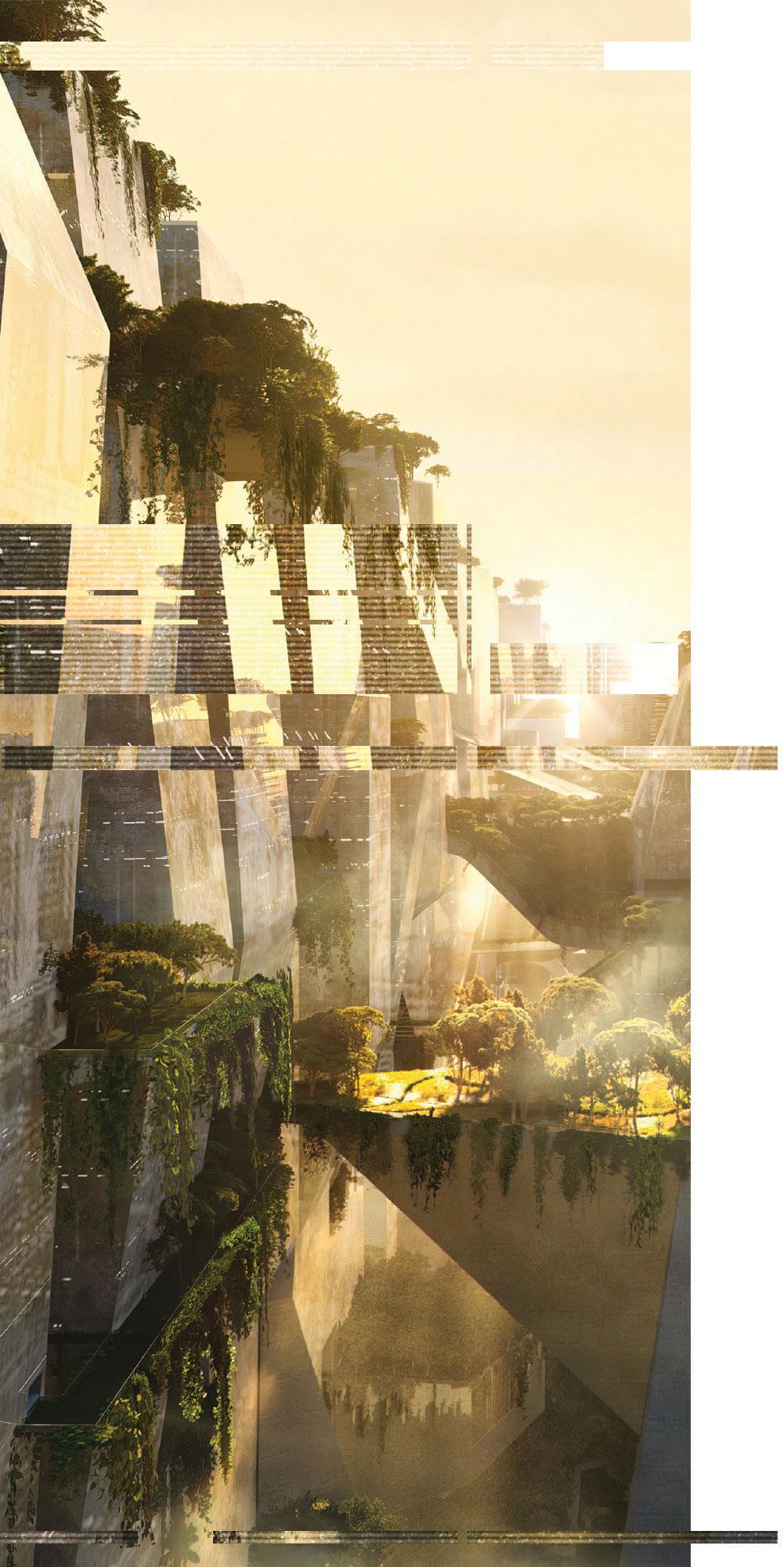
Multiple entities often sponsor large complex projects. These can be joint venture partners, multiple municipalities, and/or government entities. The result is that none of these organisations is on their own turf, using their typical processes for project development. Therefore, they are typically working for the first time with a project’s specific set of stakeholders and using unfamiliar processes to build alignment on what they want to achieve and how they want to achieve it. Often these
stakeholders, however, are aware that a large project’s schedule for development and execution will take many years. This realisation then builds consensus that the project effort should begin, even though the details of what is to be built may still be ambiguous. Starting a large complex project under these circumstances is very risky.
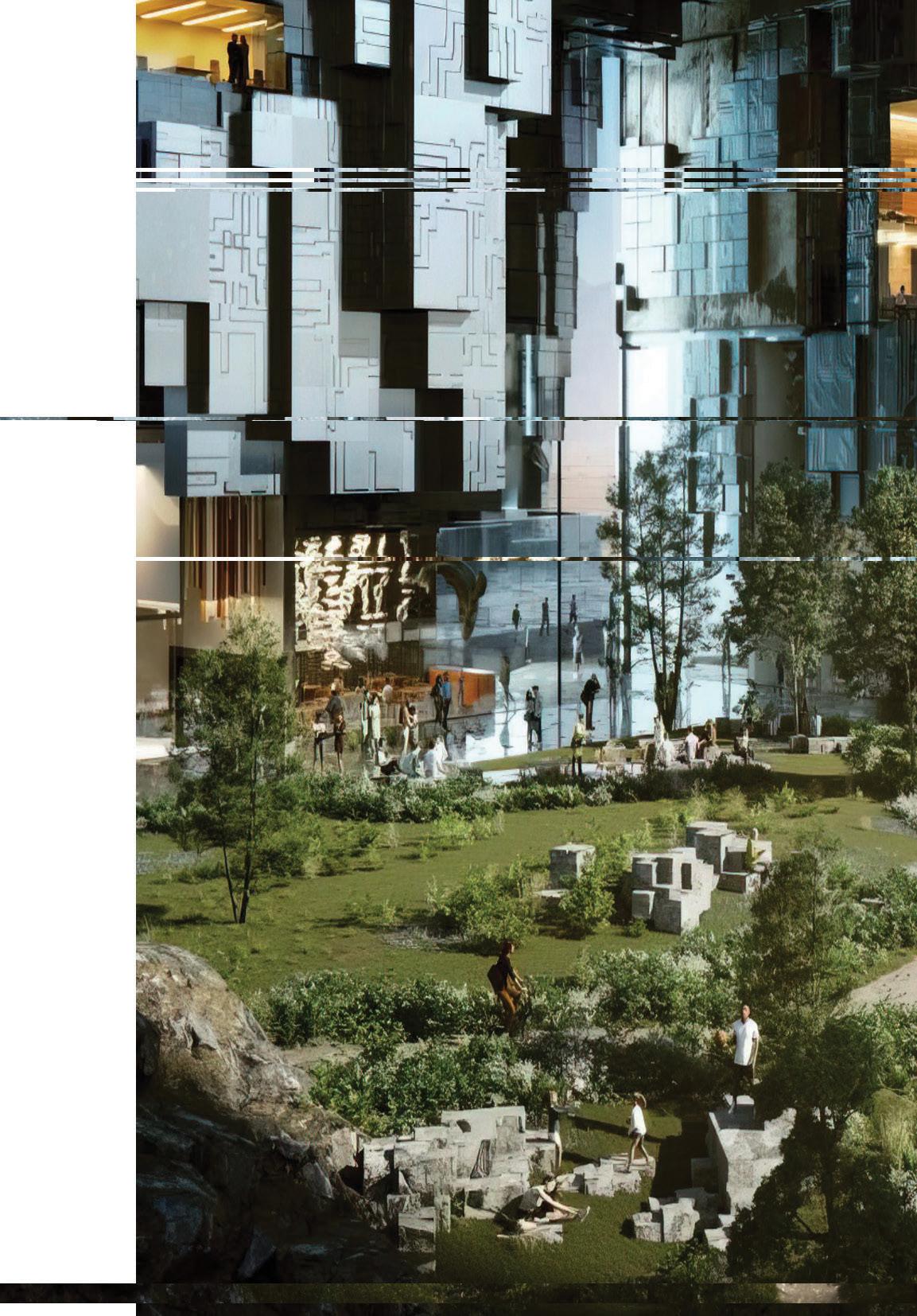
Large projects are notoriously unpredictable by most people’s gut-check standards. If +/three sigma defines a normally distributed system and with one sigma equal to nine percent as the cost variation versus an authorisation estimate, then +/- 27 percent defines the “normal” cost variation in this system. Consider that a one sigma of nine percent represents some of the best project systems in the world. Schedule variability is equally large. Bring to this environment executive leaders or public servants, all with an expectation that annual budgets will stay within a range of a few percent, and the components for significant nonalignment and conflict potential begin to appear. Careers have ended due to this disconnect of understanding.
“Let’s focus on what we can control!” Not bad advice in the right setting. This thinking, however, can cause sponsors as well as project leaders to dismiss risks they recognise as completely out of their control and influence. Because this mantra is so prevalent within operating organisations, it can leak into the culture of a project leadership team and cause it inadvertently to fail to place these type risks within the contingency and schedule analysis efforts, or within the risk management structure, or to underestimate their potential impacts. Just because one cannot influence a risk does not mean simply to ignore its power to create a negative result. Closely monitor its developments.
Constraining the funds needed to develop and execute a large complex project can be devastating. Other types of constrained resources can have an equally harmful effect. The most prominent is a constraint on personnel: the type of personnel who have the experience to staff and lead the project teams supporting a major complex programme. Large complex projects need plenty of human resources in all the roles, both for the owner’s team(s) as well as the contractor teams. Naïve views persist that large scale projects can benefit from “economies of scale’” and thus require less people per unit of work. In fact, the reverse is true. Large complex projects come with unique challenges that require human resources dedicated to managing them.
Prioritisation and Pareto charts are the daily bread of operating organisations. They are at liberty to decide the most important work for today and what is to be done tomorrow or next year. This view of course permeates a project’s culture and project teams’ mindsets. And when used in the right settings and in the right way, prioritisation is both reasonable and prudent. When used within a project’s culture, however, it can be disastrous. It focuses our attention on what is “most important” and similarly draws attention away from what is “not so important.” In this way, some things are delegated to someone else later. Many seemingly unimportant things are not worked on because they were down a bit on the Pareto chart. Projects, and especially the large complex projects, cannot suffer from this type of culture. Everything on a Pareto chart or on a checklist must be performed as scheduled, with the needed quality, every day, by every team member.
A gate review meeting (or startup) is not the place to discover a piece of important work simply was not important enough to get done on time.
Different parts of the globe have different
preferential and customary contracting practices for executing large projects. For example, large lump-sum contracts are customary within Asia Pacific countries, but not so within North America or Northern Europe. Trying to implement contracting styles from one’s home-base viewpoint in a region that considers those styles to be foreign is often disastrous. Yet home-base contracting styles frequently seem to be hard-wired into our brains as the “right way” to get things done. Some Asia Pacific companies have attempted to execute large lump-sum contracts in the US, and vice-versa, North American companies attempting to execute mixedcontracting styles in Asia Pacific. Neither ever go well. A certainty in this industry: construction is always local. (Yes, a few modular projects have worked when the
circumstances required it.) Get familiar with the contracting practices wherever they may be before assuming the home-base style can fit in anywhere.
Plan A does not always work. This is true with personnel selected for a particular role on a project, or a contractor selected for a specific scope of work. All the right things are done to pre-screen these individuals and companies, but sometimes Plan A is not working out as imagined. Everyone’s attention then is drawn to the situation. Options are pondered. Coaching, mentoring, training, and coercion are tried. “Everything will work out.” There is a chance they might. The waiting and hoping begin. Such is the DNA of timidity.
There is no formula as to how much time
should be used to correct a situation that needs correcting. Most people will take too long. It is human nature to hope, taking deep breaths. Seasoned leaders in this industry, however, tend to make their interventions sooner than they did earlier in their careers and are more direct with less ambiguity as their careers progress. Large complex projects cannot suffer through timid interventions.
Large complex projects invariably, and appropriately, are divided into smaller component project scopes. When performed correctly, this is a very helpful tool. By dividing a large project into smaller more manageable projects, however, the need to ensure the interfaces between the sub-projects are well synchronised becomes
an important co-ordination effort. To be sure, it is not a trivial effort; it comes with being large and complex. Often, project leaders simply want to delegate this effort down to the component contractors. This invariably does not go well. Each contractor is reasonably looking out for their own interests, and this does not bode well for interfaces needing to synchronise on a large number of dimensions. It is one thing to have roadways match up at interfaces and piping connections that match in specifications, sizing, and flange ratings, but interface management does not stop there. It includes wiring, control logic, and fluid flow rates and pressure, both in equilibrium as well as transient conditions. Interface management is something the owner wants to keep close and monitor its progress diligently.
Large complex projects at their heart are a supply problem. The rate at which these type of projects consume resources is unequalled. Their appetites can be likened to tsunami waves. It’s impossible to understand the resources they will consume in a set amount of time. The demand for everything a typical project needs increases: people, experts, buyers, engineers, designers, materials, specialized equipment, construction inspectors, decision making by decision makers, cash flow, space. Name it, mega and giga projects need it in quantities that will tax most global supply chains. As a minimum, analyse the size of purchases and the potential impact they will have on suppliers. Assess the capabilities and bench strength of the organisations being drawn upon. Sometimes it may be desirable to standardise on a particular supplier or equipment type, only to find out they do not have the capacity to meet the need at the scheduled time. Assess vulnerability to these types of supply chain constraints early, and then assemble mitigation plans. Failure to do so is like racing in a fog.
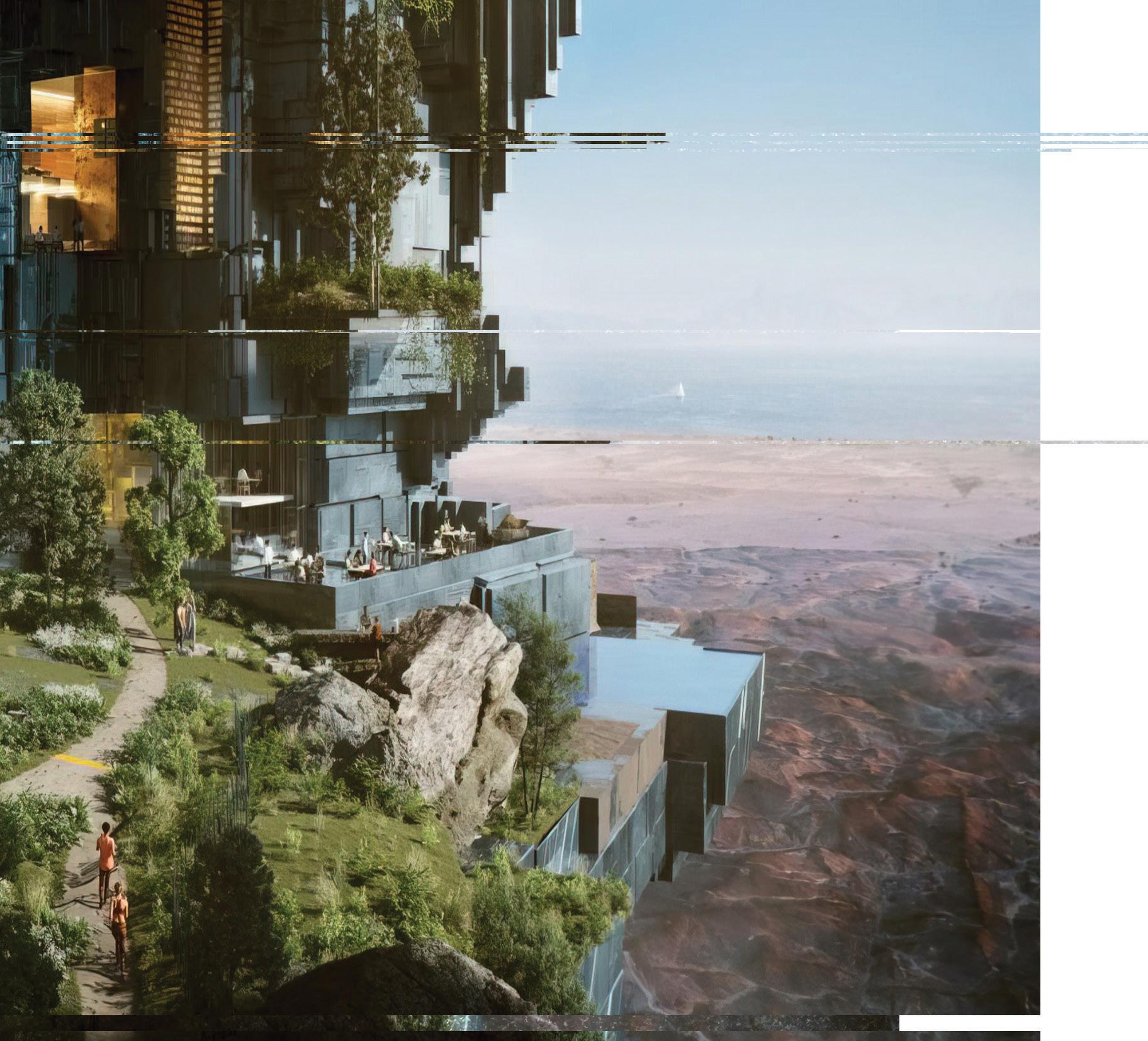

On a typical large project, a leader can send out an email, then follow up at the weekly team meeting to ensure everyone got and understood the message. Scale this up to mega or giga and many project teams are now involved, located in different contractor offices, all wanting to be left alone to execute 10 their project, and yet they need to remain synchronized on a large number of topics. There are interfaces, equipment and design specifications, schedules, contract terms and interpretations, learnings from other teams; the list goes on. What works for effective
communications on a single large project is simply inadequate when things scale up to a large complex endeavor. Multi-dimensional communication paths must be developed to support this massive synchronization effort. Without this, disintegration and confusion will naturally develop.
Projects are composed of a number of serial phases or stages. An inherent sequence is found in all project work. Early formations of objective ideas give birth to site and technology decisions that
are defined in more detail via FEED work and deliverables. After FEED, design work follows and is integrated with procurement and delivered to the site for construction activities. Those activities are followed in a structured sequence by turnover and startup efforts. Such work processes have natural transition points in them, e.g., FEED to design. Each of these transition points is typically surrounded by each team member’s assumptions about what will happen next and how. Of course, these assumptions are built on each individual’s past experiences, which may or may not be similar. Transitions like this have a way of exposing each team member’s differing views as to how each transition will transpire. When transitions are scaled up to a large complex project, chaos often ensues, even when each team has achieved alignment internally. It is doubtful such alignment will naturally occur across all the sub-project teams. To tackle this challenge requires the use of “transition leadership teams.” Such teams are composed of the natural leaders from among all the subproject teams, who then poll all members about their needs and expectations for each transition. Then everyone knows about deliverables, action items, and alignment efforts. They will also know how it will happen and how each action will affect them. Transition leadership teams are an effective tool for handling the rough-water rapids of project transitions.
Large complex projects, often referred to as mega or giga projects, are prone to above-average failure rates due to their many additional vulnerabilities when compared to smaller projects. We’ve explored some pitfalls to which these large projects are especially susceptible. When planning for such a project, specific plans and resources are required to help protect against these pitfalls. Finally, and equally important, while these pitfalls may be more impactful on mega/giga projects, they are also, of course, relevant on any size of project.
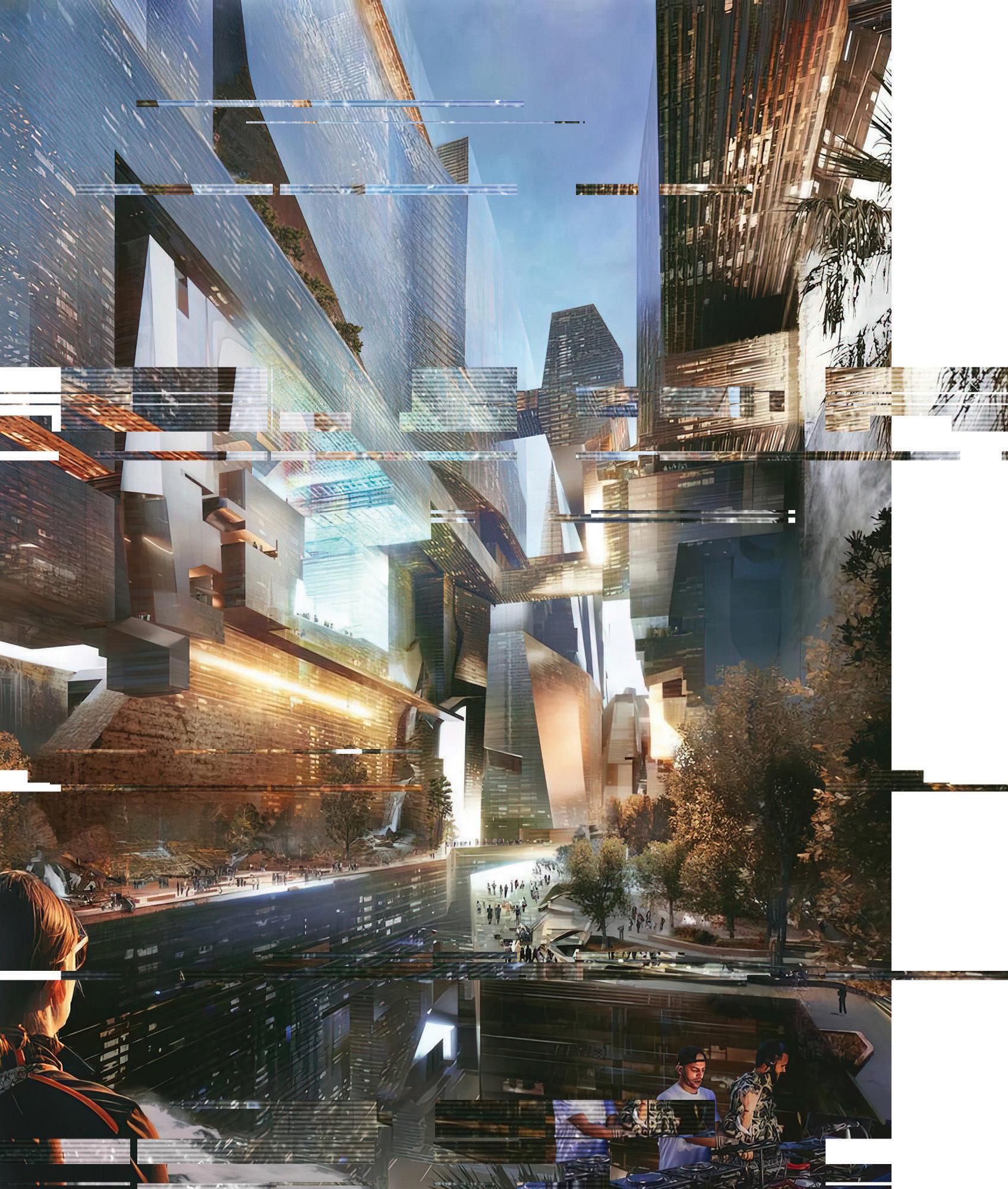
Work on a number of large-scale, iconic construction projects is well underway in the Kingdom of Saudi Arabia, as part of its Vision 2030 blueprint. While the Kingdom’s leadership aims to transform the country, it also wants to be mindful of what this transition means for its people, its culture and its environment.
Therefore, as the GCC’s largest country moves towards a more diverse and sustainable economy, it is essential that the global construction industry equips itself with the knowledge and insight to grasp the unprecedented opportunities presented to them by Saudi Arabia’s transformation.
This is why the Construction Intel Summit KSA is coming to Riyadh on November 23, 2022. The third edition, and the first live iteration, the Construction Intel Summit KSA aims to inform and educate attendees about the massive opportunities that remain across the Kingdom of Saudi Arabia.

This event presents you with an opportunity to interact and connect with regional industry decision makers and influencers. There are several innovative ways to sponsor and participate from speaking opportunities to branding, interactive live polls to presentations. Contact us for detailed information.
With so much comment about the digital twin and its ‘superpowers’, the reality is that digital twins will make the new generation of smart cities smarter and build them out on a previously unimaginable scale. Middle East Consultant asked tech pioneer Drew Gilbert, Design Manager, OBM International, for his views on these new urban dimensions…

allowing designers and all stakeholders to evaluate the impact of changes before committing them to production. They can also be used to monitor the performance of existing processes and services and identify potential problems before they occur. In addition to running real life simulations, digital twins collect data that is continuously received from IoT sensors that are located in the real-world counterparts. With the advancement of Machine Learning, Big Data, and cloud computing, digital twins integrate Industry 4.0 to drive innovation, prevent costly failures in the physical world, and improve performance and strategic planning. They oversee and manage a vast network of interconnected entities, as well as run scenarios that would predict the impact of different schemes to determine the best course forward. A recent report from ABI Research revealed that urban digital twins will save cities $280 billion in planning, development, and operating costs over the next few years. In 2022, the digital twin market size is valued at $6.9 billion and is projected to reach $73.5 billion by 2027.
irst things first. A digital twin utilises data from connected IoT sensors to tell the story of an asset all the way through its life-cycle with real time updates from the real object. From testing a process to running real-time simulations of whole urban environments, one of the key
applications of the Digital Twin is that Smart Cities are fast becoming a reality.
Architects and engineers are - right now - using the power of the digital twin to create the smart cities of tomorrow.
Shanghai and Singapore have both created digital twins to enhance energy consumption, urban city development, traffic laws, climate action, and the wellbeing of residents.
A digital twin is a virtual representation of a physical asset, anything from a process to a whole city. Digital twins can be used to simulate the assets,
Sensors collect data from the realworld version and this is fed as input to create the digital twin. As a result, the digital twin simulates the current conditions and future forecasts providing an opportunity to learn more about performance and detect any potential issues. With varying amounts of data dictating how closely the model matches the real-world physical version, a digital twin can be as complicated or as simple as required. The digital twin can be used with a prototype to provide input on the design or it can stand alone as a prototype to simulate what might happen when a built-in version is used. Whenever a product, or a process, or a city planning needs to be tested, whether for design, implementation, monitoring, or improvement, a digital twin can be used, encompassing system planning,
product redesign and development, quality management, and control to increase efficiency and cut costs.
The benefits of creating digital twins are vast. Digital twins can enable realtime monitoring and management of assets, a process, or an entire energy grid is now possible with digital twins. Before being implemented in the real world, new alterations can be tested on digital twins. A better picture of the situation could provide fresh ideas on how to improve a product, expedite a procedure, and reduce maintenance needs and associated costs by millions of dollars. Additionally, before entities are created, digital twins can be utilised to prototype them, reducing product flaws and accelerating time to market. The use of digital twins is rapidly
The Digital Twin can carry terrabytes of data that can be highly replicable to produce future clones.


expanding, and companies are already using this technology to create new products, de-bug challenging processes, and proactively maintain equipment before it breaks down. Digital twins are already used by 13% of firms working on IoT initiatives, and 62% are either implementing them now or have plans to do so, according to Gartner.
Digital twins can be developed for a variety of purposes, such as testing a prototype or design, determining and tracking lifecycles, receiving feedback on how a product or process would function under various conditions. A digital twin can also include production information including equipment, materials, parts, methods and quality control. Data is also connected to real-time responses, maintenance records, operations, and historical analysis. Other data used in digital twin design can include business data or end-of-life procedures by generating simulation models to evaluate the data. A digital twin design has been developed. This may involve real-time data and feedback interaction between the digital model and the actual physical
assets. Connected sensors on real-world objects give their digital counterpart instantaneous data. The main difference between Simulation and Digital Twins is that a Simulation is built out of a CAD or similar modeling tools, whereas digital twins are built out of input from IoT data received from sensors connected to the real assets with real-time updates.

More people are moving to urban areas worldwide. The United Nations projects that large global cities will account for 68% of the world’s population by 2050, creating a strain on infrastructure and services. To keep these cities operating smoothly, city governments need to leverage new technology based on intelligent IoT solutions that will power automated services, improve waste management, deploy self-driving car fleets, regulate energy usage, and digitally connect its citizens. And to successfully deploy a smart
Items in the Metaverse are accruing substantial value despite not necessarily having verifiable status as unique artworks.
city like this, Architects and engineers will need to engage the power of the digital twin to create the smart cities of tomorrow.
Cities employing digital twin technology to improve their social, environmental, and economic attributes will be leading the way towards becoming smart cities. Virtual models can improve with city planning and provide instantaneous data and solutions that are updated and changed (real-time) as their physical equivalents change, corresponding to the numerous challenging problems that face our cities - playing a vital role in any city’s long-term resilience strategy. It is reported that by 2025, 500 cities around the world will be using some sort of urban digital twin to replicate buildings, their
systems, and operations infrastructures such as highways, surface transportation patterns and everything that comprises an urban neighborhood, town or city. Allowing designers to place their projects in a virtual neighborhood or city to test how they will impact nearby buildings or areas. At the same time, structural, mechanical, and electrical details of single buildings or infrastructure can be isolated or analysed to optimise design, planning, and construction.
Urban Digital Twins are digital representations of the physical built environment in our cities, including transport networks, buildings, and infrastructure. They literally offer the ability to be walking through a virtual representation of your city on your computer, where digital objects, roads, street lights, bridges, and buildings are connected to thousands of data points from hundreds of city systems. Behind the scenes, the digital twin is using IoT data to optimise the interplay of buildings,
infrastructure, vehicles, and people to reduce costs, improve mobility, eliminate emissions, and ensure public safety.
The city-state of Singapore created a digital twin that includes transportation models, buildings, urban city planning, and environmental models of the entire country. The model also includes static, dynamic, and real-time city data such as demographics, pedestrian, vehicular movement, and climate data. The model allows planners to virtually test new systems such as 5G deployment over a defined area and identify improvements before installation. It is also used to simulate pedestrian movements in case of emergencies, based on building and infrastructure data, modeling the effects of noise and weather in certain areas. The digital twin implementation has already helped in reducing traffic, efficiently selecting the best locations for solar panels, and building pneumatic waste collection systems. Rising sea level is one of the serious climate concerns in Singapore, and it’s here that the digital twin is already identifying solutions and methods to combat climate change effects. Another use
is improving national water agency resource management and the roll-out of renewable energy solutions. The digital twin’s use is expected to create a core framework that manages data exchange between several digital twins tackling environmental and economic issues in the city.
Due to the ability of digital twins to thoroughly monitor the present and
simulate the future, cities are beginning to consider digital twins as a standard tool for urban planning and design. Digital twins can provide insight into energy efficiency and climate resilience activities, as well as opportunities and impacts that could arise as a result of climate-related disasters. The city is a system of systems. It’s about transportation, the environment, energy, the well-being of the citizens. That is based on the experience that they have in these multiple interactions with the city. A digital twin helps the city with predicting and then analysing and managing those different infrastructure systems in the most optimum way.
Siemens Gamesa is maximising wind energy production by building physics-informed digital twins that optimise electricity production, trim loads, increase offshore wind farm layout, and reduce trim operating costs. By using digital twins, the simulations’ outcomes are now reduced from 40 days to 15 minutes–a 4,000X.
One example case is WindTwin digital twin company, that uses a sensor network system to optimise signal processing and condition monitoring algorithms, collecting operational data that is fed to its digital twin. This data analyses and describes the dynamic behaviour of the turbine during real-time operations, allowing it to mitigate operational and maintenance costs and to support high-performance cloud computing and data analytics.
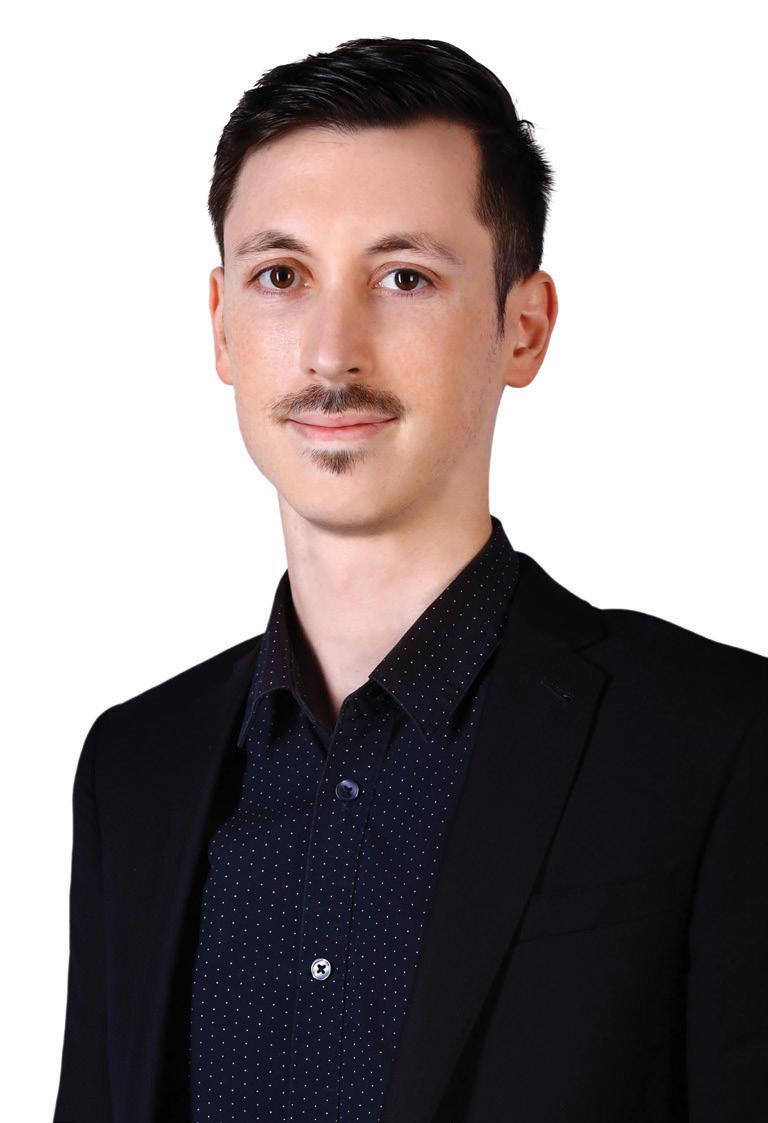
Cityzenith is one of the Urban Digital Twin platforms that offers the ability to analyse and applying BIM data automatically with their SmartWorldOS Urban Operating System (UOS). This is designed to help catalyse the evolvement of efficient and liveable zero-carbon economies globally.
Looking ahead, the digital twin will be make the new generation of smart cities smarter with the power of realtime simulation. It will be doing this on a previously-unconceivable scale - and there is no predicting of how far these new city limits will reach.
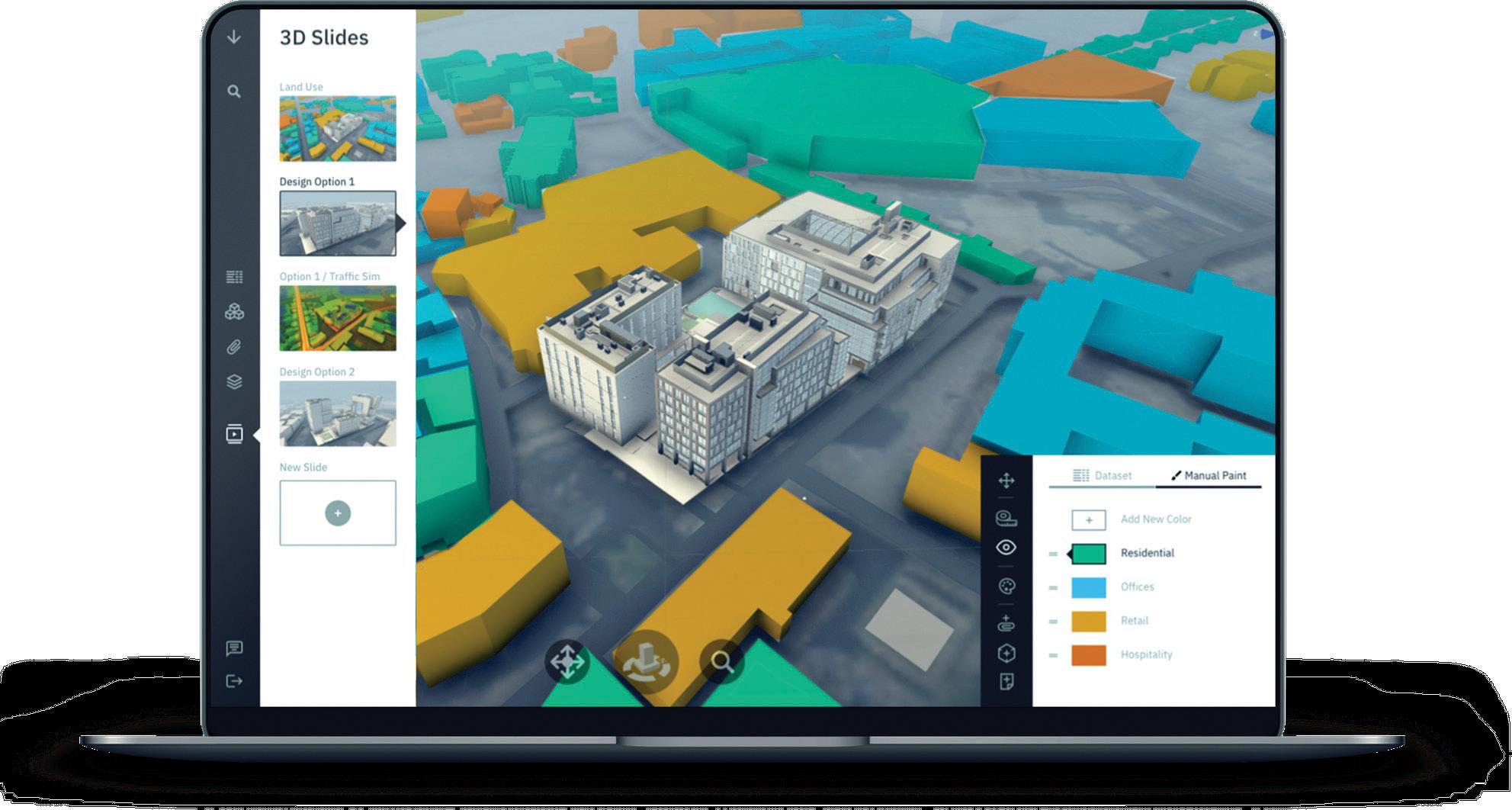
What are the key procedural and contractual issues raised by the new generation of Saudi’s giga-projects and the sophisticated mechanisms best able to resolve them? Paul Godfrey spoke with
Omnium’s Sultan Alsohaibi, the firstever Saudi Associate Director of the multinational firm, and a highly-qualified QS. His fascinating, ground-up view is something of ‘first principles’ masterclass…
irstly, Sultan, does the sheer scale of Saudi’s mega-projects lead to particular pre- and postcontractual issues?
“The astonishing variety of projects launched in Saudi recently have certainly given rise to important contractual and practical challenges and considerations for everyone involved. With many of these vast, ambitious and complex developments
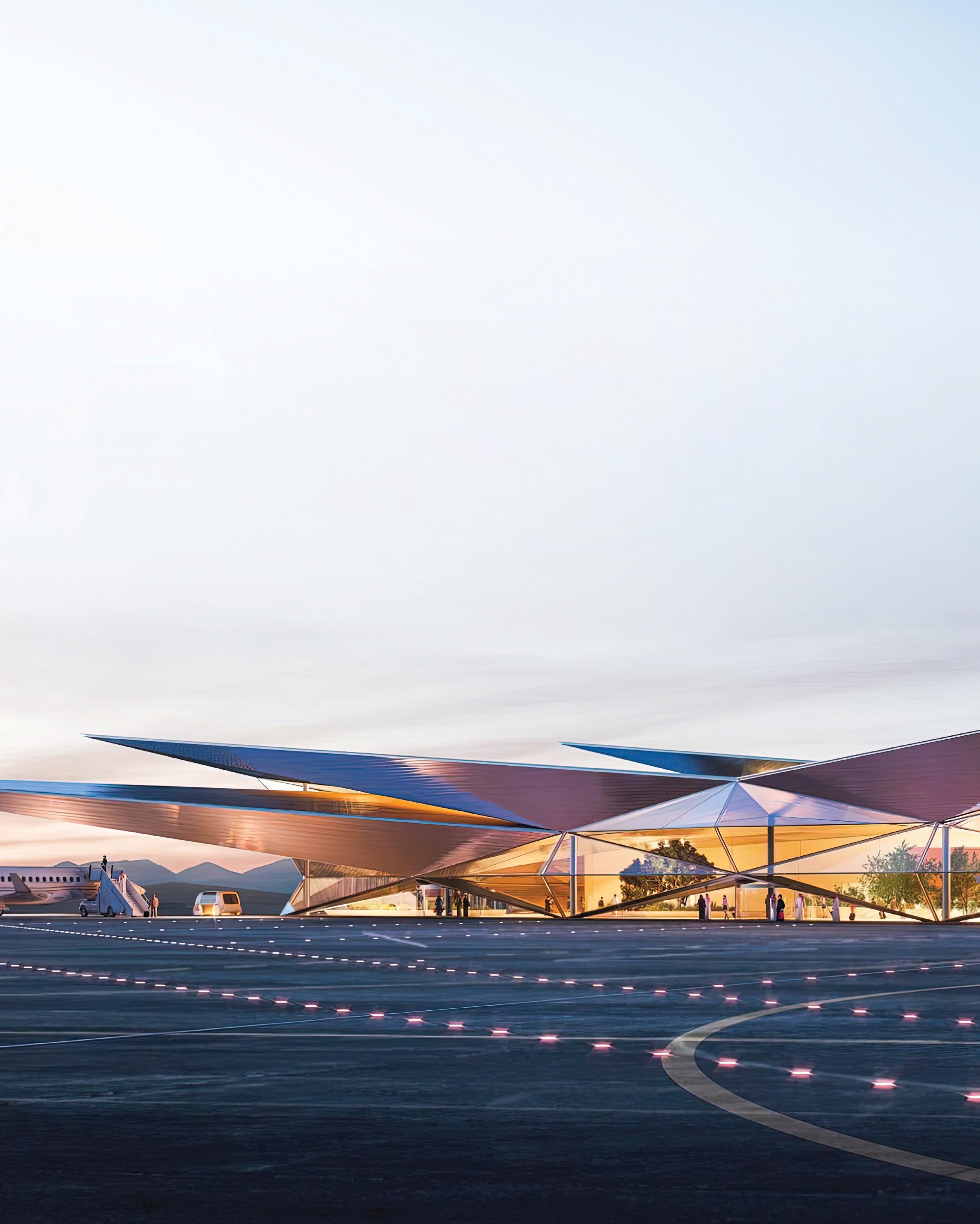
aiming to break ground at the same time, I liken the current environment to that of a race - one to appoint the right consultants, overcome the market-capacity and supplychain issues and establish a cohesive project team that will ably support the delivery of these unprecedented projects.
“Fundamentally, it is a race to find the right talent. Many more people now than historically are willing and even keen to work in KSA, but the enormous scale, complexity and tight programme deadlines associated with these projects require specific talents and experience which really limits the ‘pool’ of suitable applicants.”
What are some of the key, ‘hallmark’ projects that Omnium is involved with?
“It is an extremely exciting time for
Omnium KSA. We are delighted to be involved in a number of the big ‘hallmark’ projects, including NEOM, Diriyah Gate, Al Ula, Rua al Madinah, Qiddiya and Amaala.
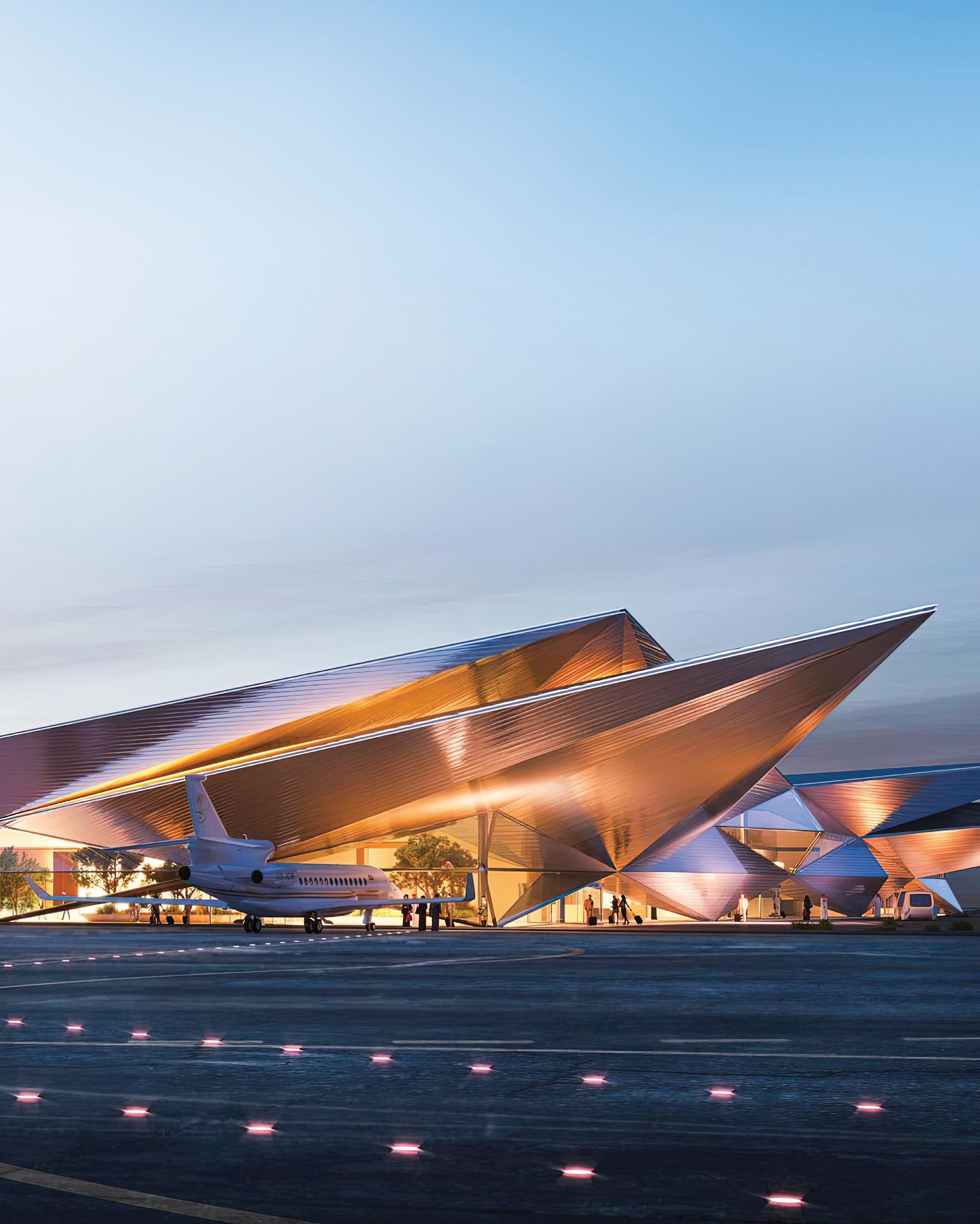

“Amaala is actually where the Vision 2030 journey started for Omnium - we were approached by the Client back in 2018 with a request to be seconded into their offices as the Executive QS during the very early days. From there, our team worked closely with the Amaala team on the development budgets. We are also currently providing post contract QS services for the Amaala Airport Work Package 1, a spectacular development!
“We have recently celebrated our appointment on a very high profile and complex project; unfortunately, we cannot yet give details due to confidentiality
agreements but we look forward to sharing the news as soon as we can.”
What are the main benefits that Omnium’s services can bring to a ‘giga-project’ and its smooth ongoing delivery?
“Omnium specialise in complexity. Our portfolio includes many of the region’s landmark projects and we pride ourselves on navigating our clients through unchartered territory. We were the sole QS firm on the Burj Khalifa. The engineering and indeed the cost management of such a structure was unprecedented at that time, so we had to create new benchmarks and guide our Client and the Project Team into what was then an entirely new niche of the construction industry. This experience has resonated time and time again throughout
the years and our clients often consult us for our ‘lessons learned’ on unique and complex projects.
“We pride ourselves on having one of the most comprehensive and up-to-date rates and benchmark databases, our Jeddah office have a full team dedicated to market testing and rate analysis which ensures that we have every costing eventuality covered. Omnium have been working in the Kingdom since 2007. Our KSA-based Main Board Director Peter Nathan has been in the Kingdom from the very beginning. He knows our clients personally and also the complexity of the Saudi construction scene. In the early days, we were involved on some of the Kingdom’s unique projects at the time, including Jeddah Tower, King Abdul-Aziz Economic City and master plan developments in Jeddah and Al Khobar, just to name a few!
“Vision 2030 has been a wonderful facilitator for the transfer of experience and knowledge throughout our offices. Rather than recruiting externally many of our UAE team have transferred to our Jeddah and Riyadh offices - for example a few years ago, our project lead for Dubai Creek Harbour transferred to the Kingdom and is now utilising his skills and knowledge to facilitate the delivery of one of the hallmark Giga Projects. That level of experience in significant projects is very hard to come by, and we are proud that our staff have those really unique skills and expertise.”
Is your team in Saudi Arabia comprised of Saudi nationals - and do you have a training/mentoring programme for the graduate cohort?
“Currently, around 33% of our KSA-based staff are Saudi Nationals. We have no maximum percentage of Saudi nationals in place, but it is difficult to find nationals who have the right qualifications to suit the particular services we provide. In fact, there are no courses in Quantity Surveying in the local universities, despite the demand being here. For employees of Omnium, however, we have established a fantastic training and mentoring programme through our
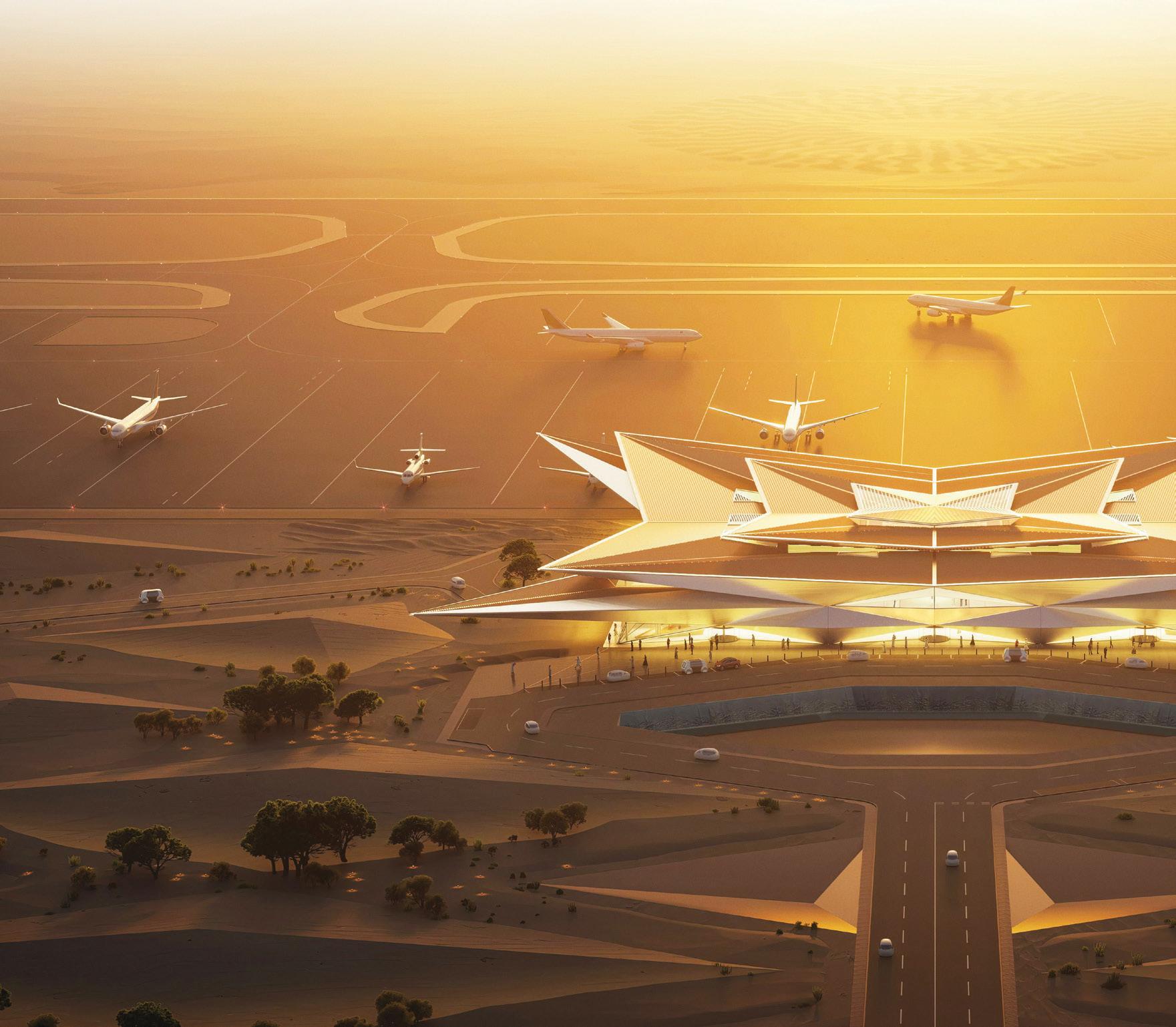
‘FUTURE’ programme (Furthering and Unleashing Talent Utilizing Resources and Education). Investing in the youth, the future workforce of Saudi Arabia, is an area I am very passionate about - the Saudi nationals who join our company, myself included, often do so with Engineering degrees and through the FUTURE Programme, our staff can access the appropriate education, training and development sources to attain the same qualifications as would be expected of any other nationality where, for example, a QS degree is available in their home country.
“I endeavour to provide the same opportunities I was granted when I joined Omnium over seven years ago as a ‘fresh’ Assistant QS and as this is a common wish for the management staff, I truly believe that there are no limits within Omnium. Last year, I was honoured to become the
first Saudi Associate Director of Omnium and I encourage our Saudi team to take every opportunity to grow their careers with us.
“One of the FUTURE programme’s most popular initiatives is our sponsored Post Graduate Quantity Surveying and Masters programme with Heriot-Watt University in Dubai and UK. It creates gateways for staff to progress their career by not only gaining a relevant qualification but also to receive the support, experience and guidance, as well as professional CPD, required to be successful Quantity Surveyors. Currently two of our female Saudis are in the process of obtaining their post graduate degree in Quantity Surveying through this programme and we are excited to add our first female Saudis to our QS ranks. As a father of two small children, I remain hopeful that local Quantity Surveying degrees will become available to Saudis in the future - this gap has certainly been noticed. I have been approached by one local University and there is definitely interest from their side in introducing not only a QS degree, but for the potential to eventually establish an internship programme. I am also keen to foster guest-speaking opportunities
to spread awareness of our profession amongst the future Saudi workforce.”
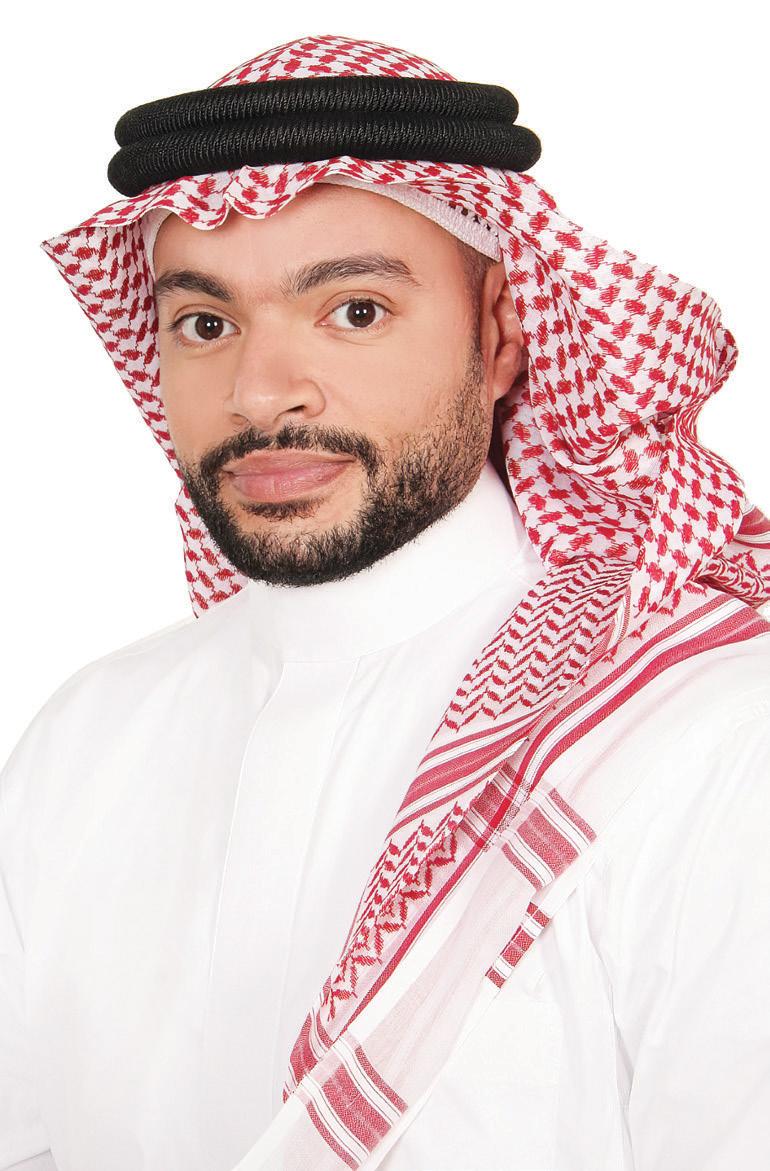
With literally dozens of stakeholders being involved in some of the bigger projects, what are the protocols that Omnium uses to structure contracts fairly? Creating ‘Balanced Contracts’, and so forth?
“Omnium has a lot of experience of working with multiple stakeholders. In fact, at one stage, there were over 60 stakeholders working on the Burj Khalifa! We have always been of the opinion that regardless of the size of a development, the structure of any contract should be balanced. Doing a lot of conflict resolution work (in fact we have our own CR division as we do so much of it), Omnium has long since realised that a reasonable apportionment of risk between the Employer and the other party is the best way to avoid complications and conflict down the line. Using clear language to set out responsibilities and obligations is also a critical key to success, as is endeavouring to ensure that all stakeholders work collaboratively in achieving the Employer’s goals of cost, time, and quality.”

How do you successfully assess the costs and logistical requirements of an open-ended project that might last 10 years or longer?
“Proactive and strong communication underpins our approach to Cost Management. By establishing excellent working relationships with key stakeholders, including the Project Manager/Engineer and the Design Team, we make sure to understand right from the outset of the project its principal objectives, budgets and aspirations. That gives us a vital insight and the information we need to deliver an efficiently-managed end result that minimises redesign and respecification, maintaining the quality envisaged for the project. We recognise that as the development evolves, stakeholder requirements invariably change, affected by movements in the market and potential investment returns. Wherever necessary, we will respect those changes and suggest what remedies to implement elsewhere in the design to maintain an overall budget target, or offer advice where remedying is not achievable for one reason or another.
“With our broad portfolio, Omnium is often able to forecast problems that are likely to develop on these major projects. Even if we haven’t seen the precise

problem, we certainly see similarities that suggest a course of action from our experience base.
“Adding to this, given the complexity of Clients’ developments, we consider that the critical factor to their success is agreement of a realistic project budget, which balances cost and quality - again, this is a result of our previous experiences. For example, we see many firms proposing budgets that are obviously unrealistically low, cutting out steps that are quite clearly necessary. This may win them the contract initially, but it will lead to huge costs and delays just a few years down the line when the realities of the costs and contract omissions become clear to the developer. This often results in Omnium Resolve becoming involved to mediate contract conflicts, and often results in the QS being replaced. It is a lengthy, often acrimonious and indeed, unnecessary stage if the initial steps are done properly.
The best way to keep a long-term project on budget is to get the full and correct information, and the right contractor, at its inception!
“Once agreement has been reached, we strongly advocate that the budget and an elemental breakdown of such is shared with the Design Team to encourage a ‘design to cost’ philosophy. From our experience, this works as a robust tool in monitoring and managing the evolving design, reducing the risk of redesign and late-notice despecification of the project in an effort to meet unexpected budget constraints. Our project teams adopt a proactive attitude towards the monitoring and protection of the approved budget. Our proactive attendance in regular design meetings will identify potential risks and opportunities amongst the evolving design that can be either minimised or maximised.
Our Pre-Contract team is also active in market engagement and is familiar with new design products and construction techniques which can offer added value in terms of cost, time or quality, during the critical design stage.”
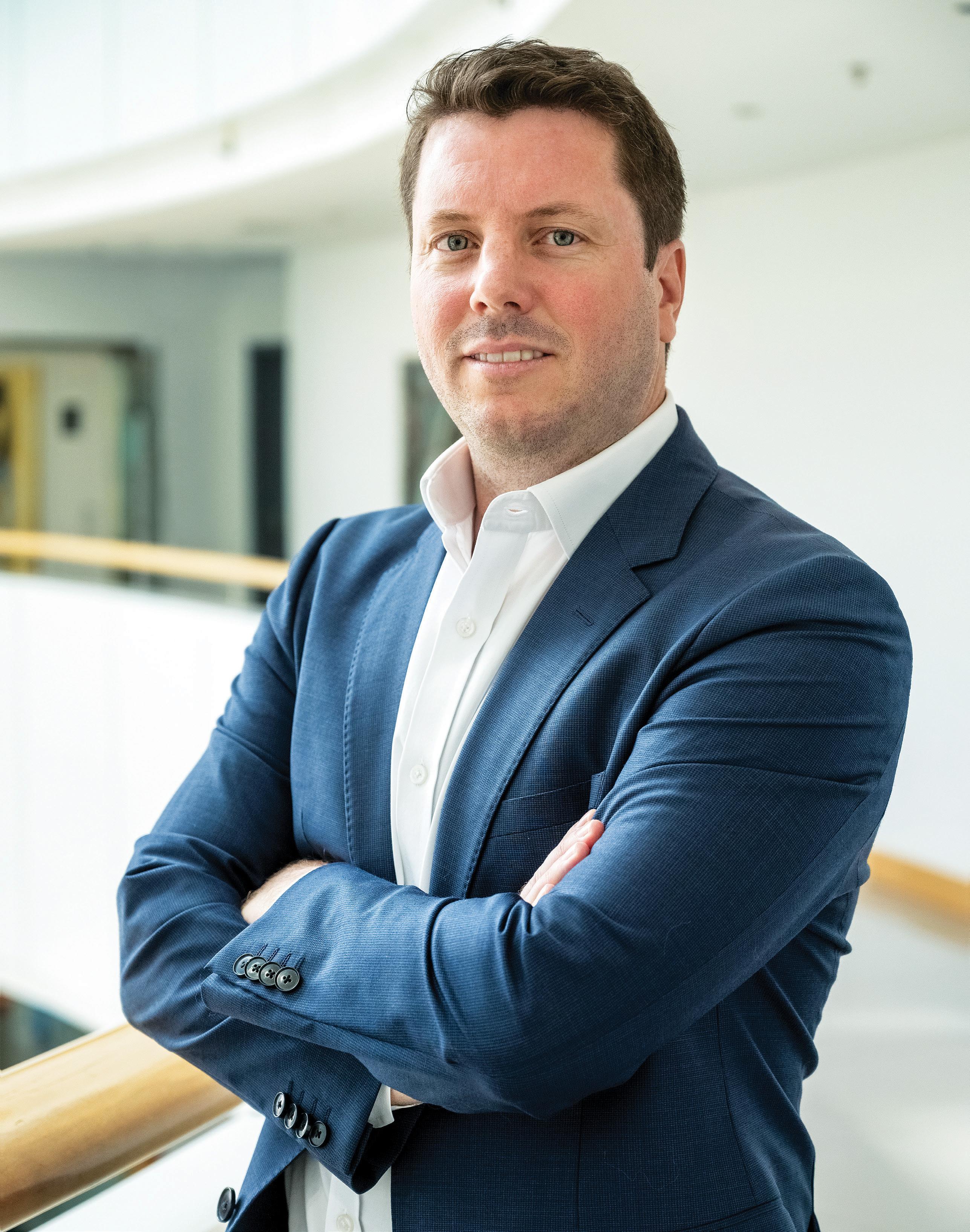
Scott Coombes is the Co-Founder and Managing Partner of AESG, an award winning, Specialist Consultancy, Engineering and Advisory firm with offices in Dubai, London, Singapore and Riyadh. He spoke to Middle East Consultant about the key trends impacting the sector and the factors driving AESG’s 80% year-on-year growth…
the workplace, but what about employees following a hybrid model. Are their homes designed to be safe work-places? Of course not - and I feel that there’s not enough work being done on this. We need to ask what style of environment will really be required, and what are the dimensions, structures and materials necessary to achieve this.”
We’re told that by 2025, globally one million people per week will migrate to cities. How do you see the urban future developing (microhubs, vertical cities, repurposed communities, etc.) and what can AESG bring to that future mix?
“I feel the real challenge here sits not with the influx of people, but with the implications that has for climate change and GHG emissions. Honestly, I think migration into cities and urbanisation is perhaps a lesser concern when compared to climate change.
ow that we are moving out of the Pandemic era, what do you see as the greatest challenges impacting the market todayand have the Covid years left a legacy in terms of how clients want space to be physically used?
“Absolutely. Developers are increasingly exploring some degree of adaptability and flexibility in their projects, giving them a ‘comfort factor’ if the situation (and the demands of the tenants) should suddenly change, as well as aligning with today’s
shifting lifestyles. Plus, let’s not forget that habits and working lives really are morphing: an example would be the strong trend towards people becoming ‘digital nomads’ - living and working remotely through technology - the Middle East is a great location for this, with its warm weather, beaches and advanced urban life. Now, many areas that are being developed will be able to incorporate this ability to shift rapidly between work and leisure facilities, becoming totally topical and in tune with today’s shifting work and lifestyle requirements.
“Of course, we don’t know how these trends will evolve over the next 10 or 20 years - particularly given factors like the Metaverse and how it might completely recentre our habits and expectations.
“Another factor is that we tend to forget how many people are now working from home. For example, there is still so much emphasis around health and well-being in
“The positive, however, is that urbanisation presents a lot of opportunities when trying to tackle the challenges around climate change and GHG emissionsespecially because you can then tackle them with very strong economies of scale.
“As for what those future cities will be like, I believe there will be very dense environments of small communities, and these will be both linear and vertical. We are already hearing about the growth of a ‘15-minute hub’, where work, leisure and retail are all clustered handily together. This can also mean that factors like mass transportation and pressures on infrastructure become less of a concern - and remember, this is an issue that has never been properly resolved by traditional suburban models.
“My expectation is that these future cities will lead to dense high-rise of very high performance buildingspartly through retrofits - which will be connected by very sophisticated energy distribution tools. We’re likely to see features such as double-skin structures, biophiliac surfaces, and entry points at various heights, catering for tomorrow’s
generation of autonomous drones.
“In terms of what we can bring to the mix, our Strategy and Advisory division are working closely with public and private sectors across transport, logistics and FMCG to develop their net zero roadmaps and strategies which will feed into the development of these future cities.
“In fact, here at AESG, we will also soon be launching a cluster of new services to support and advocate these changes - but for now, I’d like to keep them top secret!”
Scott, we often hear that the market is undergoing a time of tremendous change, what with the increasing advent of elements like Sustainability, Big Data, and the Digital Twin. But to what extent are you experiencing a real shift in what clients want and how they want it? “I think there are three areas where there is tremendous change happening. The first is the powerful and immediate need for a drive towards sustainability, energy efficiency, high performance, and the quest for zero carbon. The second is the digital revolution that’s taking place all around us and the range of new capabilities that it’s enabling; and the third is the post-Covid economy: what does that actually mean and what are the challenges that it brings?
“Better efficiency is the solution to addressing these challenges and seems to be the real shift in what clients want. Remember, traditionally, projects tended to rely on a balance between three factors: time, quality and cost. These three were interdependent - so if you wanted more quality, the project would take longer or you would compromise the cost, and so on. Similarly, if you wanted to reduce the cost, you might have to look at compromising the quality. But what clients are looking for now is the ability to put the emphasis on quality at the same time as driving efficiency in time and cost - it’s no longer a case of sacrificing one in favour of another. It’s now all about efficiency across the board in energy, resources, procurement, materials and efficiency through less waste.
“The only thing that can drive this new approach is the use of technology. To achieve this agenda, which is very much bound up with the drive for sustainability, we have to rely on factors like digital monitoring and reporting, life cycle assessment, and deploying relatively new tools like AI and generative design.

“A good example of this is Masdar City, which has a very powerful vision of the future and for nearly two decades has been achieving extremely high levels of sustainability. AESG has been providing a number of our services on a new project there called MC2; it’s a phenomenal project and will include the first net zero energy office building in Abu Dhabi. In collaboration with the architect, we deployed several digital tools to design the canopy of the main building: the objective was to achieve the optimum balance between its ability to maximise sunlight to the PV panels, improve outdoor thermal comfort and ventilation, maintain daylight and views to the building, and achieve structural efficiency in the design. We did this through scripting and generative design, using digital tools to get exactly the right balance of factors; something that traditional design would find immensely time-consuming in terms of all the modelling involved - whereas the digital tools can modulate the optimum characteristics immediately.”
Tell us more about the digital platforms you use when interacting with clients: how do you combine the interests of many diverse stakeholders in one digital interface?
“No doubt that right now, there’s a strong shift towards the need for digital recordkeeping through design and construction. One of the tools we use for this - and to collaborate with different stakeholders - is AESG’s Data+, a cloud-based data management platform. We worked with a team of developers and software engineers to build this into an evolved, bespoke digital asset management tool so that we can track construction activities and improve documentation for handover and operation. I see a lot of value in the data and the potential for this to help optimise future project operation and efficiency.
“The algorithms we employ are able to pull together tremendous amounts of this data - but it’s not only us: we’re seeing the tools available across the industry expand dramatically in all these areas. An interesting example is the launch of AI digital image generators like Midjourney and DALL-E . These tools are simply incredible and have triggered a phenomenal shift in the creative process in just the last 12 months. There’s no textbook here - just constant and accelerating change. The only challenge I see is that while they are great enablers, they perhaps need to be used with caution, because I can foresee that we might lose certain elements of diversity and meaning in the design process. They can have a tendency to have similar responses to the same requests and inputs, but on the other hand they are immensely time-effective.”
With the growth of the ‘gigaprojects’, are we experiencing a growth in sophistication of technology, or is it purely a question of scale that has changed?
“No, it’s both. We see sophisticated technology being utilised as well as more traditional approaches at this scale, and of course, there’s no doubt that this scale is unlike anything that’s happened before.
Our approach to consultancy is all about collaboration and building relationships. This sense of collaboration is critical to us; we’re a people business, and we’re fortunate to have some of the best minds in the industry”
Technology, again, has become the driver for this urbanisation and the ability to combine these factors. But all this dramatic change doesn’t mean that the giga-projects can’t retain the benefits of traditional architecture, too. An example here is that we were designing climate appropriate buildings in the Middle East for thousands of years using passive design techniques such as thermal mass, air circulation and shading. When we look at projects like Diriyah Gate, they are continuing to embrace these same techniques alongside modern technologies.”
Do you feel that the Digital Twin is only ‘half the story’, because surely the real next step is how the amazing amount of data carried in the Digital Twin can then be deployed to create hundreds (or an infinite number) of replicant projects?
“I absolutely agree. I see digital twins as win-win for projects, because you can both

the markets we work in. For example, here in the Middle East, we see the strongest growth in our sustainability and ESG strategic and advisory teams, as well as our environmental assessment work - and this is all bound up with a focus on new developments, particularly in Saudi Arabia. Whereas in London and Singapore, our teams in façade engineering, FLS and sustainability are seeing more focus on retro-fitting across existing building stock.
“Another very important factor is the quest for sustainability and net zero, and what that actually involves region-to-region. Remember that achieving net zero energy in the Middle East climate is very different from achieving net zero energy in the UK - the challenges are completely different.”
What do you think has been the key factor behind the extraordinary success of AESG and its tremendous growth in a short space of time?
“It’s probably because of what we call our CPA - our Culture, Philosophy and Approach. What does it mean to work with AESG? We constantly ask this question.
improve the day-to-day performance of a building whilst also collecting valuable data on operation and efficiency from hundreds and perhaps thousands of projects. What I was saying earlier about AI image generation is also true here; a pool of data on building operation can be used to vastly automate and improve design processes, such as MEP sizing, fresh air ventilation or planning health and safety features and amenities. When done manually this requires painstaking work for each iteration of a floor plan, but now it can become an intrinsic part of the roll-out, with AI delivering resolved engineering solutions to different formats and structures as required.”
Do you see the regional market here in the GCC as presenting unique challenges as opposed to the other markets you now call your base (notably London)?
“We are definitely seeing unique drivers in
“Our company culture has been a critical factor for us - not just internally but also externally in the way that we engage with our clients and find solutions to project challenges. Our approach to consultancy is all about collaboration and building relationships.
“This sense of collaboration is critical to us; we’re a people business, and we’re fortunate to have some of the best minds in the industry, so bringing our teams together over a common goal is essential to our success. It’s about creating the ‘fire in the belly’ and that enthusiasm in the workplace, and I feel that this is key to our growth and our long-term partnerships with our clients. This has put us on track for about 80% growth in revenue this year. Another factor is our diversity; about 45% of our business is female, and we have more than 50 nationalities working here. In terms of gender, we have a strong representation of women at board level as well, which I think is unusual in our sector.”
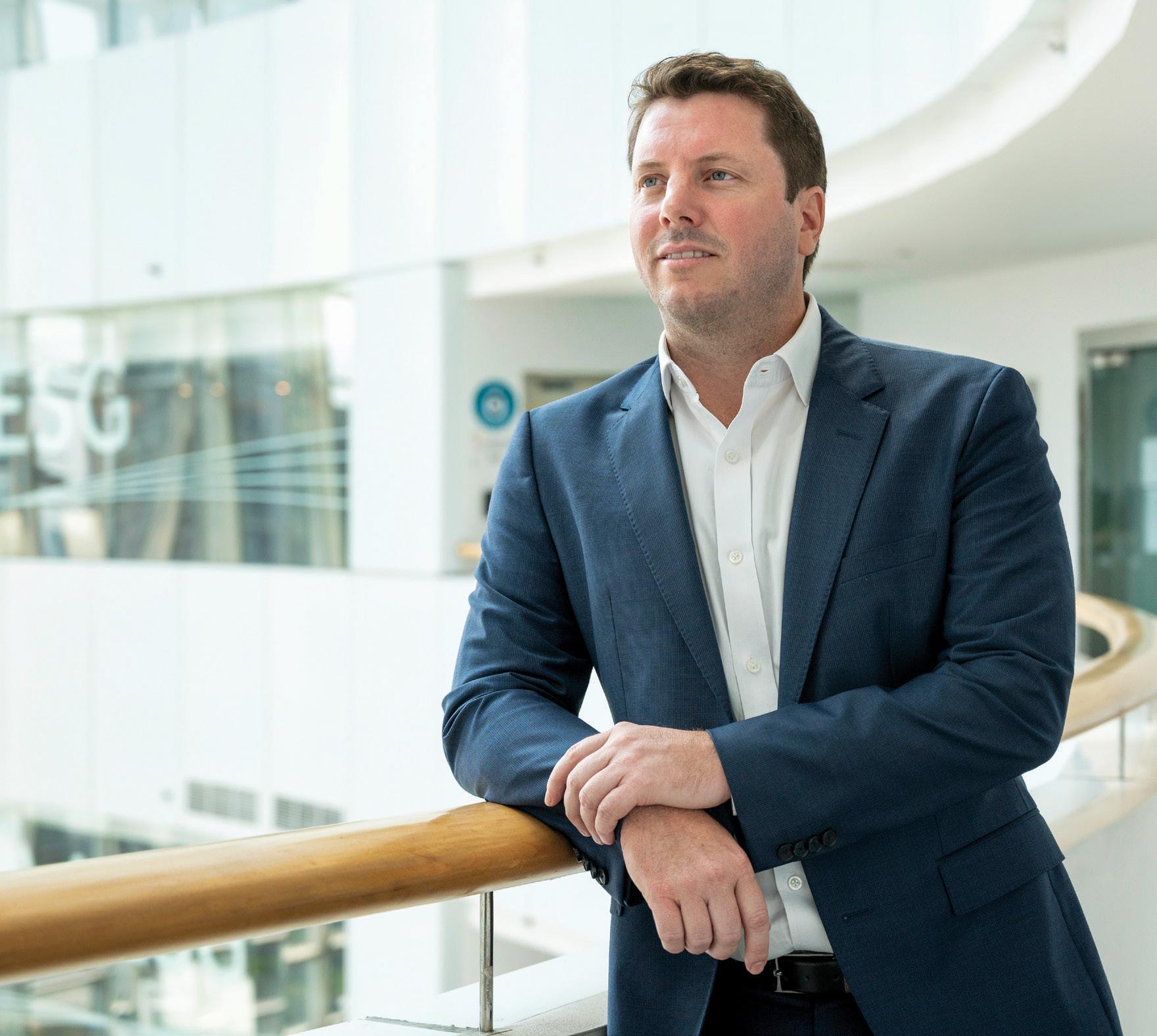
Cundall’s World Green Building Week showed how retro-fitting the built environment can be a powerful catalyst in the quest for decarbonisation
edition, taking place in Dubai on 15th September 2022, proved no exception, focusing on an issue that has dramatically gathered impetus in the last few years: retrofitting the UAE’s built environment for a net zero future.
Cundall itself - a multi-disciplinary consultancy with 21 offices globally - has made an important commitment to the net zero agenda, targeting 2030 as its cutoff for all projects to be net zero carbon in design (with the caveat that in some markets - notably UK and Australia - net zero goals might be achieved earlier).
This year’s event was structured so that Mario Saab, Head of Sustainability MENA, Cundall, delivered a short, scene-setting presentation, and then moderated a panel discussion featuring four experts across the spectrum of the built environment.
Among the key points he highlighted were two striking statistics relating to the built environment and its implications for the net zero debate, namely:
• 40% of GHG emissions originate from the construction sector
• 80% of existing buildings will still be standing in 2050
Together, these statements show that far from disappearing under wave after wave of developments, the great majority of today’s buildings are here to stay - and it makes good sense to focus on these as the epicentre of the transition to a net zero carbon built world.
Similarly, the construction sector itself has to find better and more sustainable working practices if its sights are set on a cleaner, greener built environment that can make an authentic contribution to global net zero goals.
The panelists Mario then led in the animated debate were:
• Abdulrahman Khansaheb, Managing Director, Khansaheb Industries
undall’s World Green Building Week, hosted annually across many of the company’s global offices, has become one of the industry’s touchstone forums for the topical discussion of critical development themes. The most recent

• Mohamad Khodr Al-Dah, Survey Director, Dubai Land Department
• Stuart Healey, Commercial Director, Savills
• Nadia Ibrahim, Associate DirectorConsultancy & Sustainability, Farnek


(Left to right)
Mario Saab, Head of Sustainability MENA, Cundall; Mohamad Khodr Al-Dah, Survey Director, Dubai Land Department; Nadia Ibrahim, Associate DirectorConsultancy & Sustainability, Farnek; Stuart Healey, Commercial Director, Savills; Abdulrahman Khansaheb, Managing Director, Khansaheb Industries.
Before summarising the panelists’ comments, it’s worth keeping in mind from the outset that discussions about the future of real estate are intrinsically time well spent - because there is simply no other sector globally commanding such financial weight and significance. A report released by the international market-marker Savills as part of its Impacts 2021 programme shows that in 2020, the value of the world’s real estate assets rose 5%, to reach the staggering figure of $326.5 trillion. This makes real estate the world’s most significant store of wealth: more valuable than all global equities and debt securities combined, and worth almost four times current global GDP.
Yet in a market so utterly international and significantly diverse, what are the key channels for creating a more Sustainable future and how can the UAE best and most

cost-effectively make its own progress - and perhaps champion the changes?
First things first. The global picture is not an encouraging one. As Nadia Ibrahim commented at the event: “Almost 65% of the building stock in this world comprises very old buildings that are performing inefficiently in terms of energy efficiency, and in terms of operations and maintenance. It is very important to be more energy efficient and carbon efficient as part of our global goals in achieving net zero by 2050.”
One of the key factors to consider is that new construction is all too often not aligned with the Sustainability agenda. It frequently presents further challenges to meeting agreed targets for global warning: and indeed, there’s no tougher challenge than here in the GCC, where current data suggests that far from aligning with the proposed benchmark of an internationallyagreed 1.5C temperature increase, we’re in fact more likely to provoke an increase in the territory of 3-4C. Yet, given that aligning new construction with Paris Agreement goals is easier than aligning existing buildings, what are the advantages of retro-fitting? The reality is that in addition to the fact that overall, the emissions from constructing a new building - as opposed to retro-fitting - are significantly higher, retrofitting brings a broad range of additional benefits. It can:
• Avoid the massive release of CO2 into the atmosphere, consequent on wholesale demolition and construction work
• As much as 70% less development cost in terms of CAPEX exposure
• An end result where projects are betteraligned with traditional community structures, by-ways and lifestyles
• Considerable savings in materials used, particularly in terms of concrete and cement consumption - primary drivers in CO2 emission
Of course, before there’s any commitment to a particular way forward, it’s vital to know what the current local needs for development actually are. This is precisely why debate at the event kicked off by looking at the present state of play and the mechanisms in place for accurately judging the priorities.
Mohamad Khodr Al-Dah explained how Dubai Land Department has recently created the Building Classification Survey. Taking five years to complete, this was a mammoth project surveying 150,000 plots in Dubai.
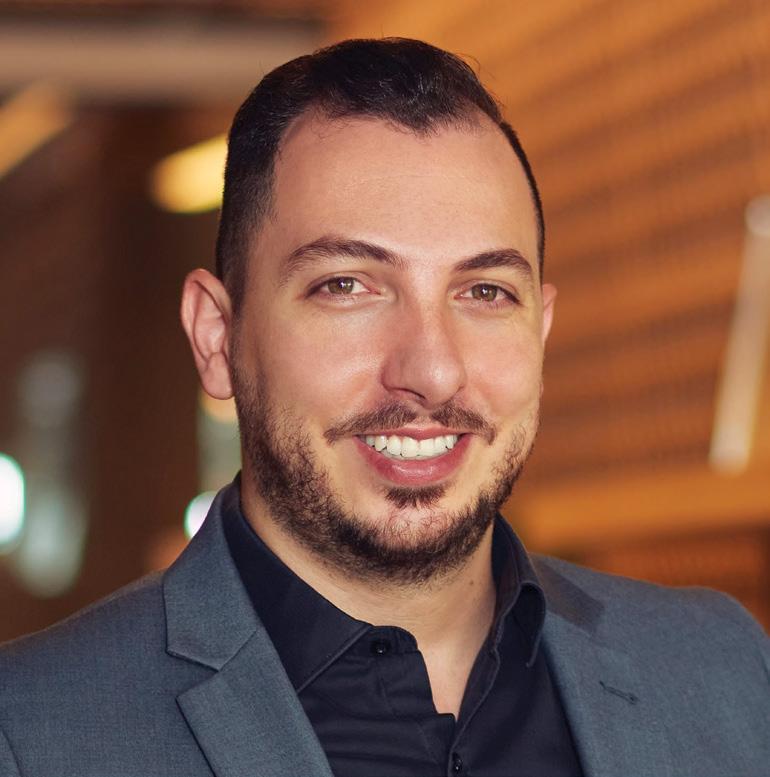

The output is a comprehensive ranking of building performance which brings muchneeded transparency to the market, allowing tenants to compare buildings and select the option that best aligns with their goals.
The Survey then provides a star rating for each property, creating a detailed database offering considerably more transparency across the rental market.
Interestingly, as Mohamed explained, surveys have shown that property owners who take a proactive approach to retrofitting their buildings, place themselves in a better position to both retain existing tenants and attract new ones. Commercial tenants in particular want to know how sustainable the building is, how good the air quality is, what amenities are on offer - and they are in fact willing to pay a premium for these enhancements. These are all factors which the new star ratings make very evident. Meanwhile, for owners, the capital invested in refurbishment can pay for itself through increased rental yields.
Savills’ Stuart Healey explained his own experience of seeing tenants becoming more knowledgeable about the market and what they want: “Around the world we are seeing an increase of tenants that are prepared to pay a ‘green premium’ to be in a sustainable building.”

Meanwhile for Mohamed, “the whole ethos behind the Survey is to classify buildings from 1 to 4 stars. The idea is to highlight, eg, that you have some areas for improvement, which can be achieved through retro-fitting your building, and then you can increase your rating. I think that once there’s a wider understanding of the system, we can raise the standard gradually and it will allow us to achieve our targets for net zero by 2030, 2040 and 2050.”
The need for a firm ‘platform’ for change was echoed by Stuart Healey, when he said: “We have so many enquiries now about underperforming, distressed assets. Retrofitting is becoming a very much talked-about option for building and portfolio owners. Dubai is reaching its maturity and now needs to look at maintaining existing buildings. Of course, the most important incentive for building owners is the tenants, and we find that tenants are increasingly asking for information on ‘green’ initiatives.
Active in the UAE market since 1935, Khansaheb is a business that has a better organic knowledge than most about the raft of challenges that the construction sector faces - and what Sustainability reforms will really entail.
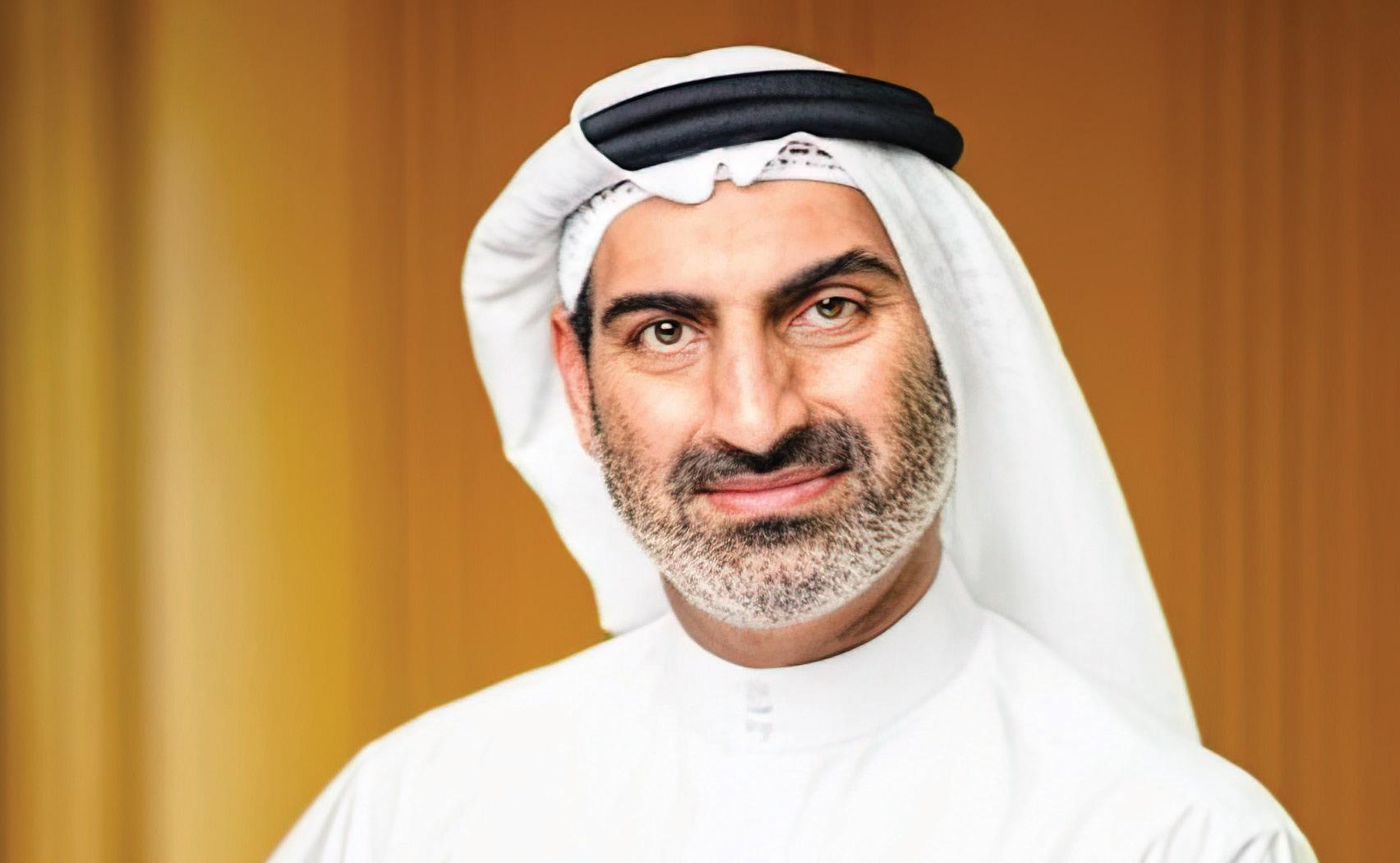

Abdulrahman Khansaheb believes, for example, that Sustainable initiatives are the only way to create better indoor air quality - a topic that he has passionately endorsed for more than a decade. As for the future, he argues that: “We can’t be under any illusions, we can’t keep building as we have done over the past decade. We’re reaching a tipping point. If retrofitting isn’t already a priority for contractors, it needs to be on their radar at least.
“In my view, retrofits are the market of the future over the next 10 years. However,

we also have to see that in this area, the traditional procurement process does not work, and it’s not going to help us achieve these important goals. We need to see designers and contractors working closely together to achieve smart, efficient retrofitting, really understanding what the process means and how to deliver it efficiently and cost-effectively.”
Closing the discussion, Mario Saab pointed out that retro-fitting can be key in ensuring that properties retain the value they need to keep attracting the Tier 1 and Tier 2 clients from both the residential and commercial point of view.
He also added that in order to make retrofitting a more widespread option, perhaps what’s really necessary is a powerful catalyst from Government and the public sector.
“Perhaps”, Mario concluded, “tax incentives are a key way forward here?”
His point reflects the importance of the opportunity that’s waiting to be taken. For example, currently in the GCC - with the possible exception of Saudi’s so-called ‘giga-projects - re-purposing existing structures could meet many of the goals that developers have in mind when they commit to building new.
By bringing together clients from across the industry, discussions at this event also showcased a vital ingredient in the recipe for successfully retrofitting our entire built environment for net zero collaboration.

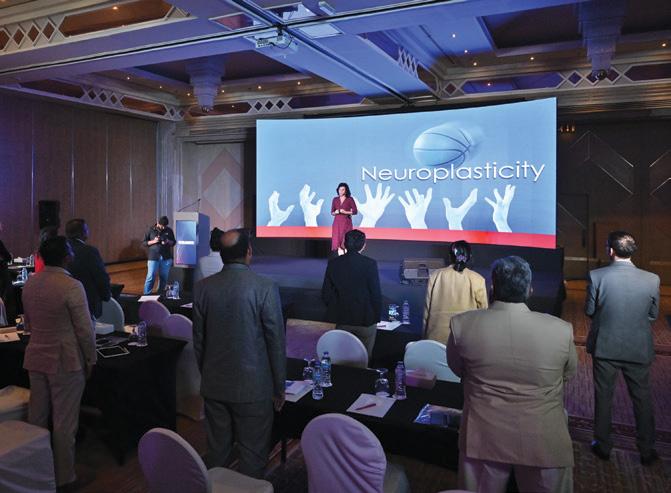
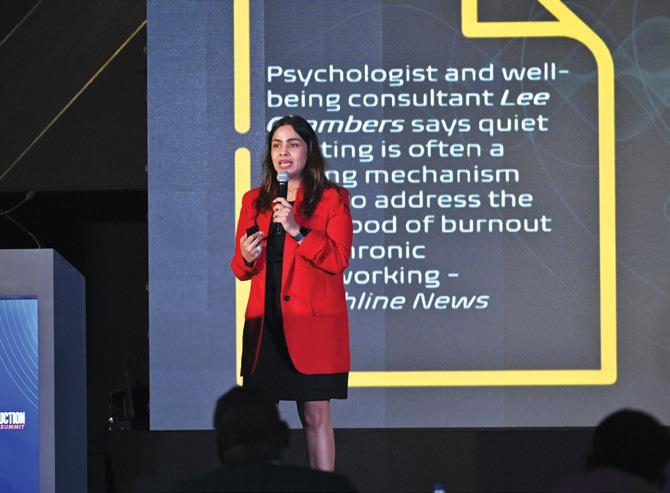
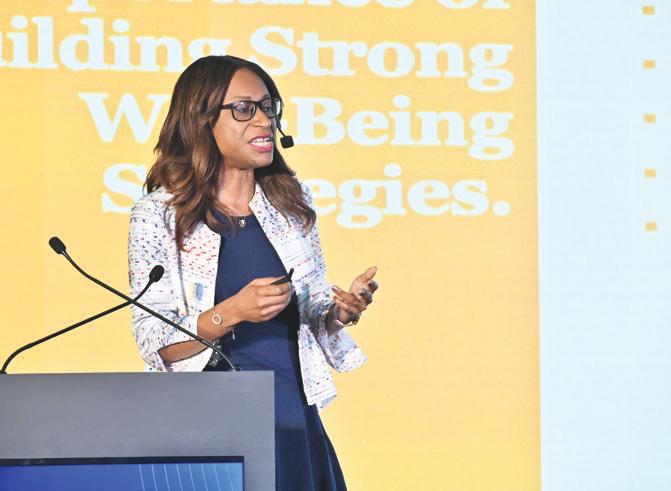
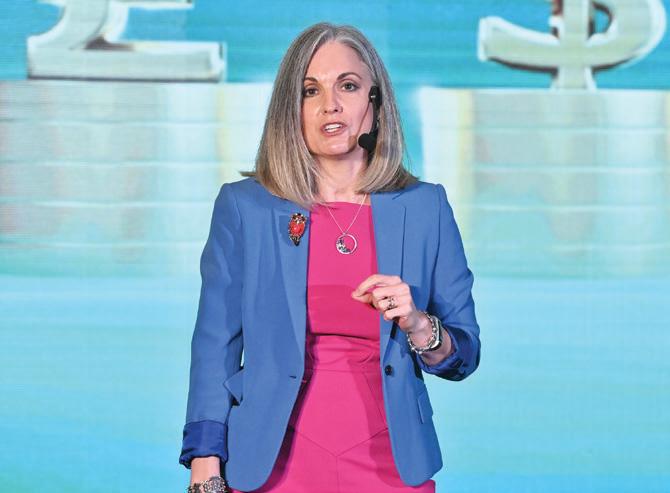
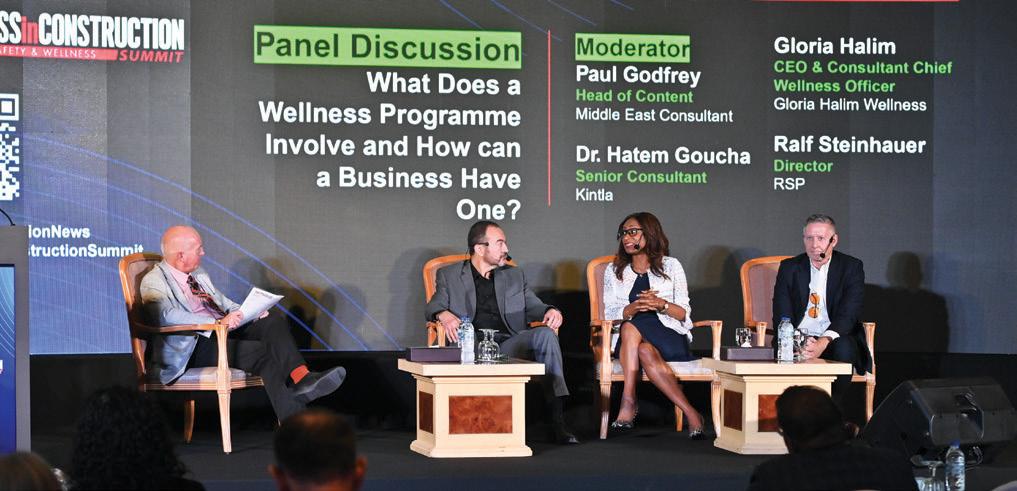
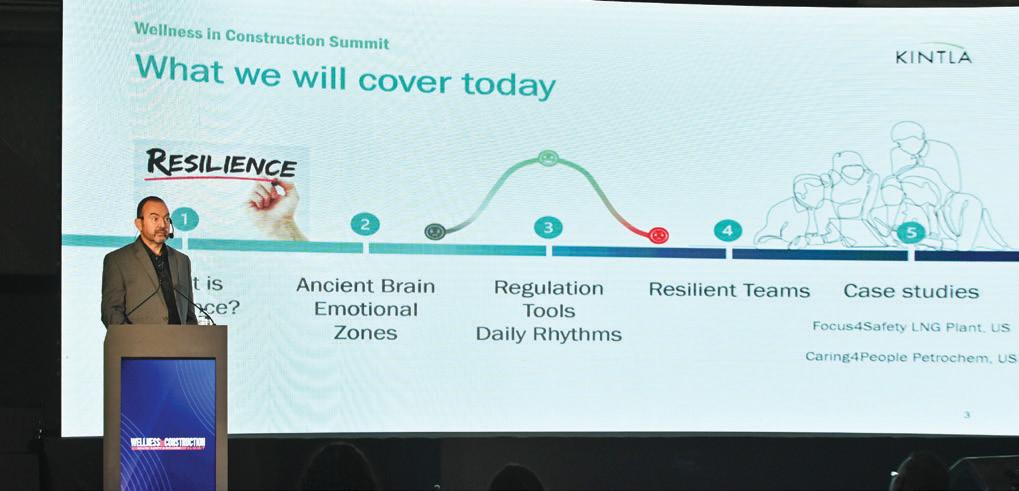


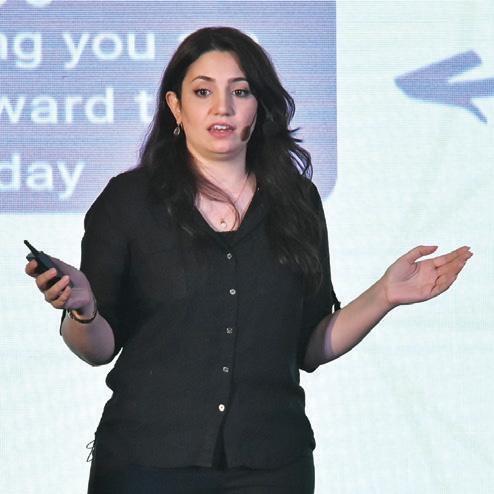
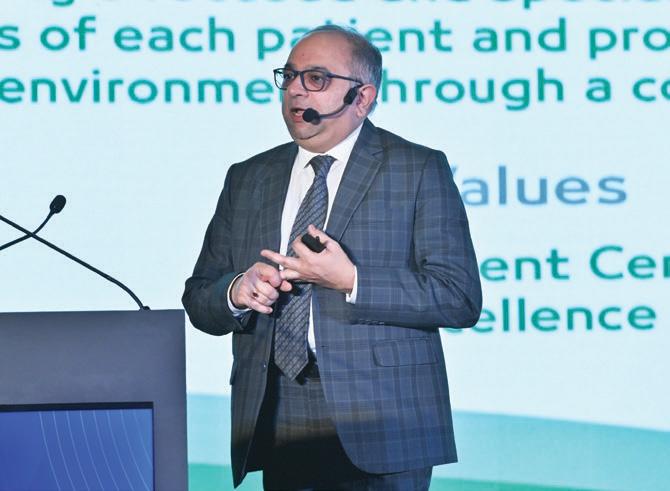

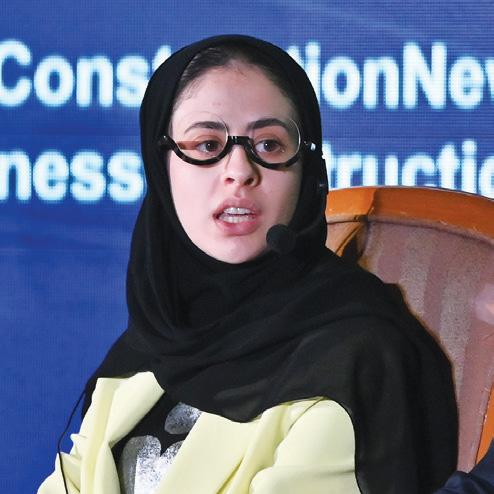
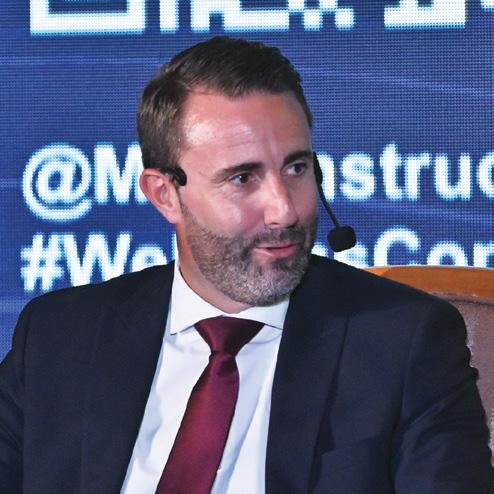
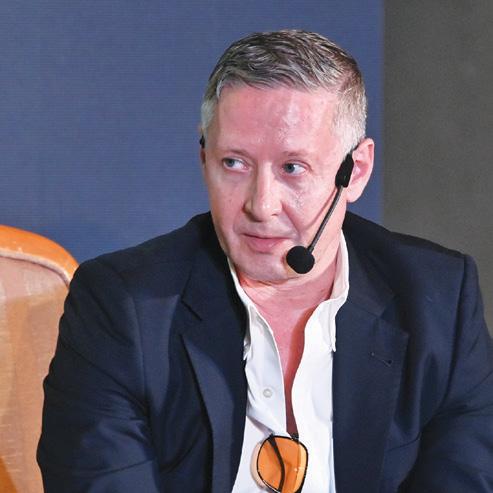
Wellness isn’t something insubstantial or ethereal, but a core part of the business model.
chieving staff Wellness can be a powerful way to supercharge a business, align teams behind core goals and better meet key commercial objectives. So, the Wellness in Construction Summit - taking pace at the Crowne Plaza Hotel, Sheikh Zayed Road on 5th October - set out to give a comprehensive briefing on the spectrum of Well-being debates and how businesses can, in the most practical terms, adopt them as their own.
Moderator Paul Godfrey, Head of Content at Middle East Consultant, set out the day’s agenda and - by quoting examples from the life of the ‘founder of Wellness’, Henry Wellcome - demonstrated that


As to the larger understanding of Wellness and how it impacts every aspect of day-to-day life, in and out of the workplace, the audience was then treated to a ‘piece-de-resistance’ keynote presentation from international motivational speaker and Wellness expert, Carol Talbot. She argued cogently that Wellness is founded in scientific fact, quoting no less than five acclaimed breakthrough thinkers who had pioneered research fields linking neurology and behaviour patterns - and showing how certain modes of brain interaction tangibly underlie Wellness thinking and its actual delivery.
Now, since for many the over-riding issue of Wellness is how to make it work in a business setting, the day’s first panel discussion took a very practical theme, and was titled: ‘What does a Wellness programme involve and how can a business have one?’ The panel, moderated by Paul Godfrey, featured:
• Ralf Steinhauer, Director, RSP
• Dr. Hatem Goucha, Senior Consultant, Kintla
Among the major themes emerging, there were three particular conclusions, which would provide core discussion verticals for a good deal of the day’s dialogue. These were:
• Wellness programmes don’t require a massive, once-and-done commitment; a company can ‘dip into’ a Wellness package, perhaps hiring a consultant, and start with just a few well-honed parameters.
• Corporate culture is terrifically important in determining whether or not a Wellness programme will be effective - or if it can even happen at all.
• However, one of the most extreme examples of this is working from home, where there will often be no shreds of a corporate culture informing day to day work. So, a Wellness programme needs
to have the outreach to tackle the new, hybrid working models.
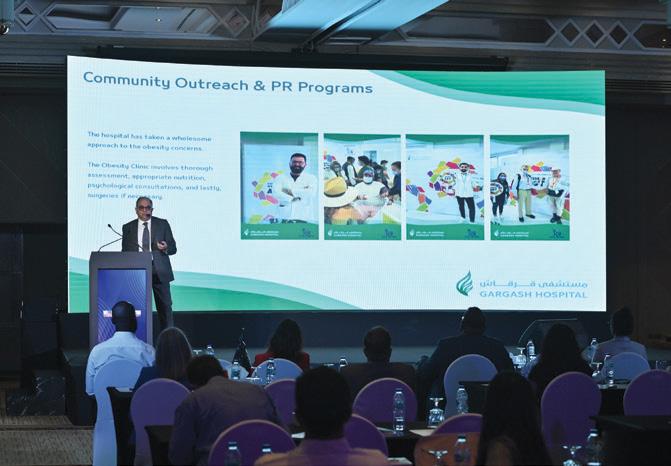
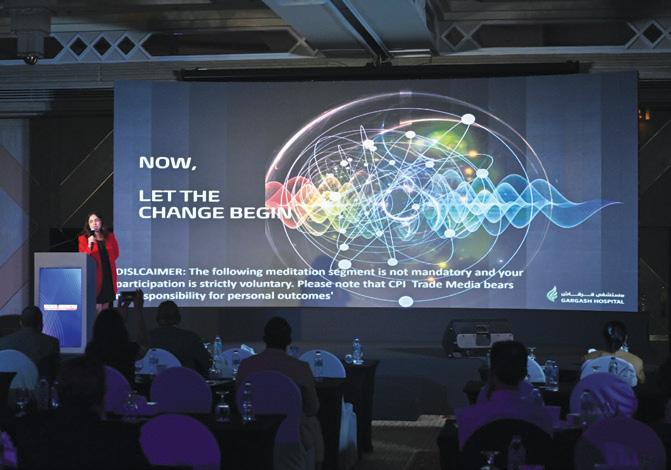


So - how can a business take this step-bystep approach and put a working programme in place? Hiba Mehanna, General Manager, Miracles Wellness Centre, assessed the links between health and Wellness and how an organisation can best learn to interact with employees - understanding their motivations and contribution through an effective Wellness lens. With that understanding, the business can then decide what its ‘intervention’ should actually look like and the steps that are best feasible within given budgets and timeframes.
As to the tangible benefits of doing this, Jennie Stallings, Partner/Commercial Manager, ChelseaGREEN then took the stage, explaining what a business can realistically expect, and looking at a selection of the redemption statistics that
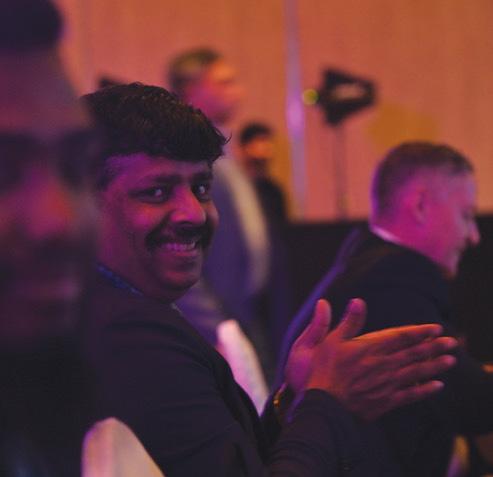
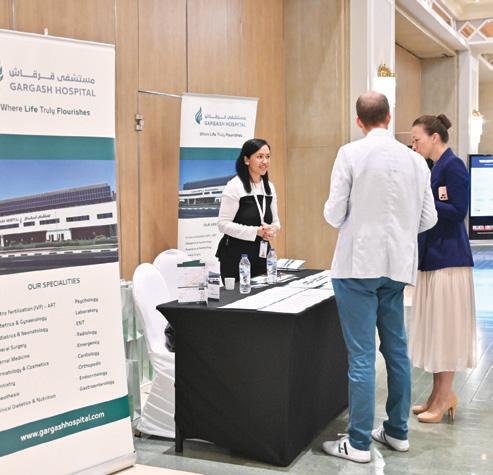
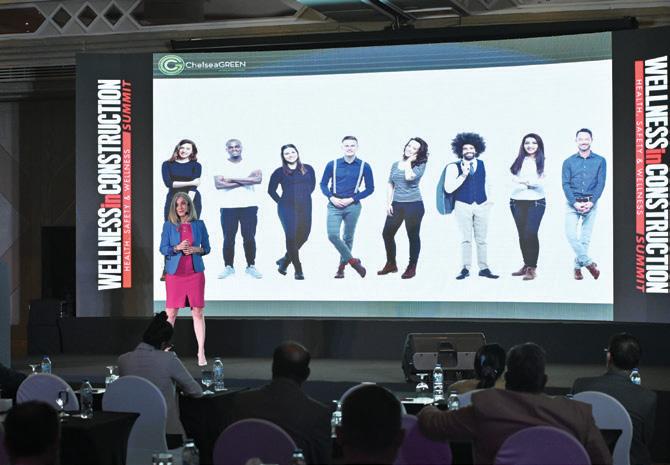

underpin the ultimate commercial validity of a Wellness campaign.
The next speaker, Dr. Hatem Goucha, further explored the psychological dimensions of Wellness touched on by Carol Talbot. In his exceptional papertitled ‘Wellness and Performance through Emotional Regulation’ - he argued that we live in a work and life environment surrounded by stressors, which can cause chronic stress - and left unchecked, this can deteriorate our well-being as well as instantly lower our IQ and ability to respond constructively. His presentation walked through how the brain reacts in the face of these daily stressors and what mechanisms can be utilised to emotionally regulate our brains and achieve resilience, whether in individuals or across teams.
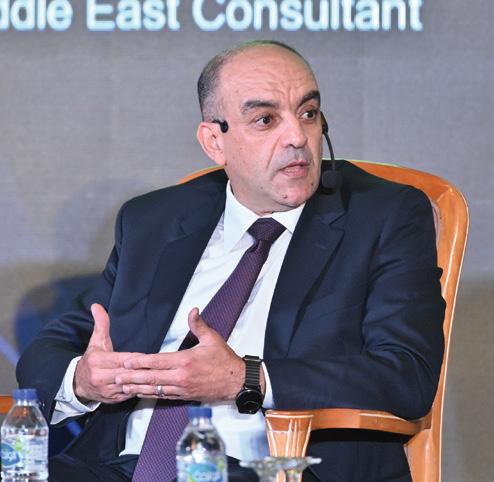
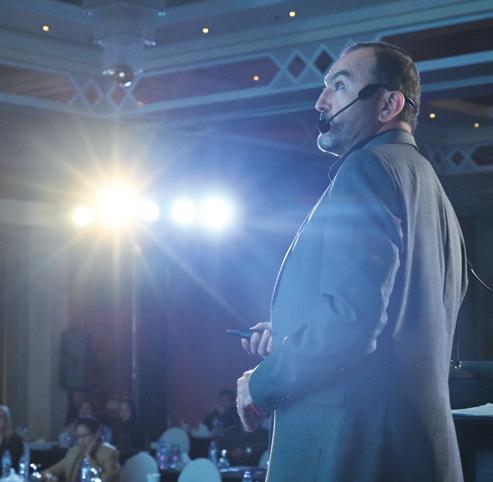
Gloria Halim, CEO & Consultant Chief Wellness Officer, Gloria Halim Wellness, then further assessed the usefulness and application of these principles across the Construction sector. Herself a cancer survivor, Gloria is well-placed to comment on why businesses must advocate change throughout every fibre of the organisation, and showed how the most effective change - which is culturally driven and spread - will always come from the C-suite.
Prior to the day’s second panel, the audience had an excellent presentation from Mandar Kulkani, CFO of Gargash Hospital, which, he proposed, is a nearideal first resource for Wellness, and a facility that companies of many sizes and disciplines should very much keep in mind. The hospital has pioneered front-

line approaches to Wellness, adding them to a more traditional clinical mix because of their proven effectiveness and value.
What about the impact of the environments that businesses themselves provide? This would be the topic of the second panel, ‘Wellness and the Built Environment’. Panelists - again led by session moderator Paul Godfrey - were:
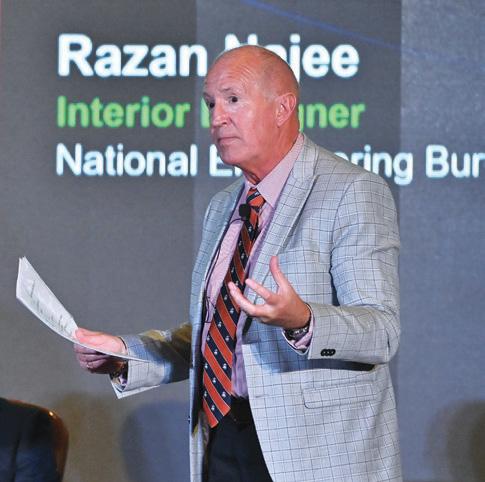

• Dr. Khaled Mahmoud, Technical Director, Bainona Engineering Consultancy
• Ralf Steinhauer, Director, RSP
• Razan Najee, Interior Designer, National Engineering Bureau

• Fernando Freitas, Main Board Director,
The principal findings of the panelwhich produced some of the best and most animated exchanges of the day - included:
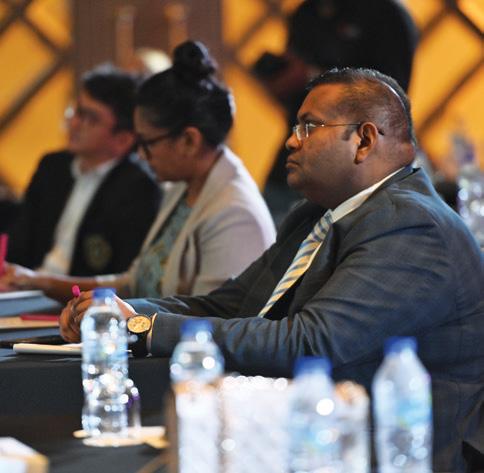
• Companies don’t need to make massive
structural changes in order to encourage Wellness - simple changes through creative design approaches can make a big and lasting difference.
• Lessons learned from the pandemic can make considerable inroads into improving Wellness, eg, use of a variety of working spaces, better attention to materials and the use of more hygienic surfaces (an example is the shift away from wood to high-density ceramics and metals).
• Client briefings are changing and becoming more aware of Sustainability and Wellness issues: this means that the more people-focused, sophisticated technologies and approaches now stand less chance of being value-engineered out.
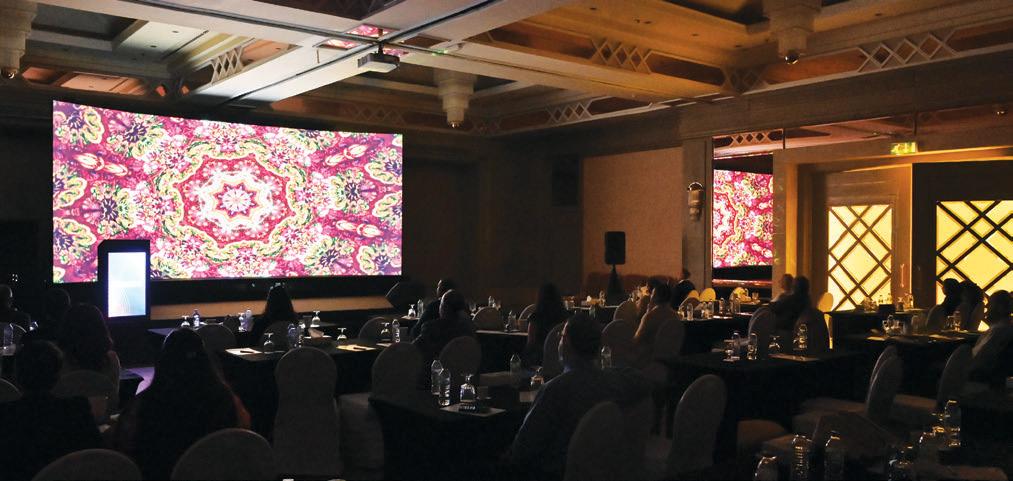
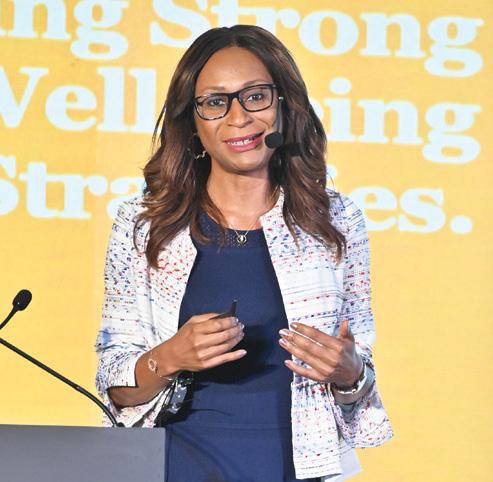
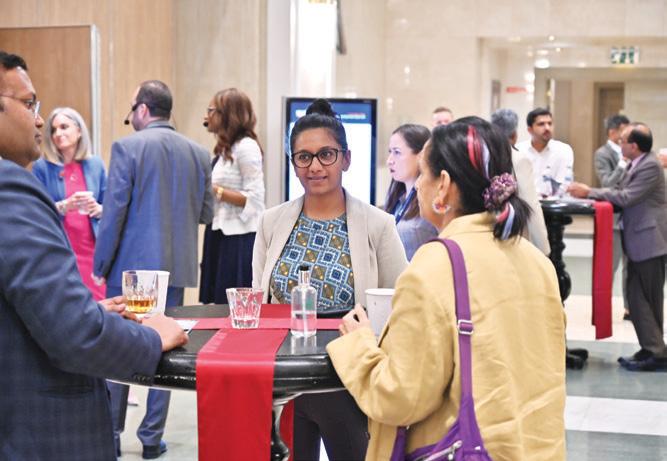

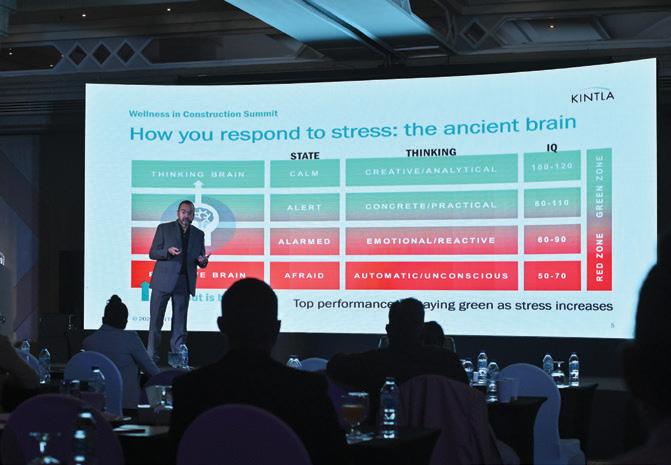


The day’s ‘anchor’ session was admirably
provided by Gulneet Chadha, who then led practical meditation for the event’s audience - empowering them to enter a meditative state for six minutes, coaching the basic principles that could be used thereafter to reduce the onset and likelihood of anxiety conditions and chronic stress. With more than two million social media followers, Gulneet is a highly respected Wellness speaker and consultant - whose standing is now endorsed by her recent appointment as Heald of Mental Health and Wellness, Gargash Hospital.
One last important point: this was the debut edition of the event, and judging by the wealth and diversity of themes discussed - and the seniority and credibility of the speakers - it promises to be the first of many future discussions that will, in all likelihood, see the topic transition to centre-stage in a great many corporate agendas.
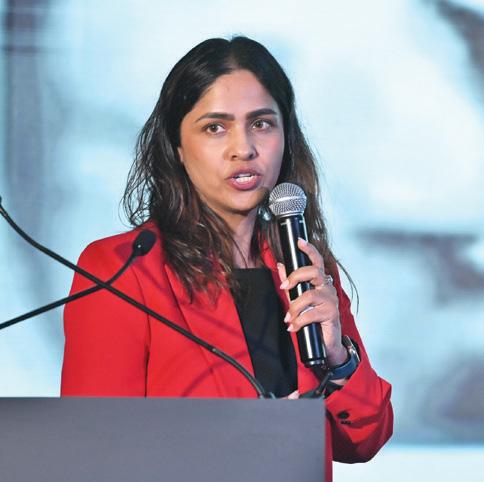

Jennie Stallings is Partner and Commercial Manager, ChelseaGREEN. An acknowledged expert on ergonomics and the impact of the built environment on personal well-being, Jennie was a keynote speaker at the recent Wellness in Construction Summit. Here, she tells us more about her views on the future of the Wellness debate in the GCC and the evolving agendas linking well-being and business performance.
Jennie, do you feel that there’s a difference in approaches to Wellness between the GCC and other regions? There is definitely a different approach to Wellness from companies in this region
compared to areas such as North America, Europe, UK and parts of the Far East. Awareness of its importance is growing, but there is still a lot more to be done - and the reality is, this means there are many opportunities to improve Wellness in the workplace across each and every sector. Two of the main factors that will drive its widespread adoption are education and incentivisation at a government level.
What are the key things that a business needs to action in developing an effective Wellness programme?
This is a complex topic and the requirements are multi-faceted. However, the biggest thing is making a start - and then putting a programme into practice from the top down. There’s no doubt, too, that business owners and CEOs have to lead by example. Employees need to see that they have the company’s support in making their health and wellness a real priority.
Does a Wellness initiative actually deliver commercial benefits, or is that just an ‘urban myth’?
Wellness initiatives absolutely deliver commercial benefits and there are numerous studies to demonstrate the return on investment for a business as a whole. When the wellbeing of staff improves, productivity is enhanced and that, of course, has a direct impact on the bottom line.
Are there particular employee and stakeholder groups that will benefit most from an in-house Wellness programme?
Anybody and everybody can benefit from an in-house wellness programme, providing it is tailored to the to the particular company and meets the individual needs of the user. Making the programme truly bespoke is half the battle; try to avoid ‘one size fits all’ thinking.
Why did you believe that the Wellness in Construction Summit was an important landmark in the region’s debate, and choose to speak there?
There’s no doubt this event is helping to bring the Wellness conversation to the forefront of people’s minds - and it’s only when these things are talked about openly that change happens. It is also important for understanding how Wellness fits into the construction process as a whole during design and build, rather than seeing it as an interiors job once the occupiers move in. The agenda is often ‘back-weighted’ in this way, but in fact it needs to be planned and costed-in from Day One.
What did YOU talk about at the event?
I covered several aspects but my main objective was to highlight how the value of an organisation is driven by its people and therefore, how companies can attract, nurture and retain talent with well-developed Wellness strategies. I discussed the tangible financial benefits and demonstrated how Wellness programmes contribute to high-performing workplaces. Another element was looking at the main aspects to keep in mind from a conceptual point of view, such as air quality, movement, and ergonomics.
Millennium Plaza Tower
14th Floor, Sheik Sayed Road P.O.Box 26290, Dubai, UAE www.intertek.com



